

How close are Ruia family and Russia’s VTB?
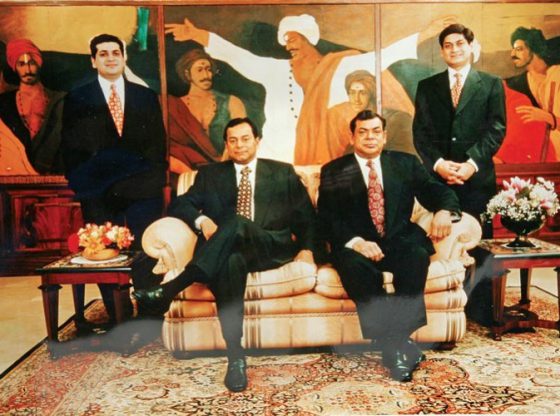
(The Ruia family controls the vast Essar corporation: from left, Anshuman Ruia, Ravi Ruia, Shashi Ruia and Prashant Ruia)
The Ruias have very strong ties with VTB. The Russian bank is Essar Group’s financial backer and adviser. VTB provided billions of dollars to Essar, financing Essar Energy’s and Essar Oil’s delisting, paying off lenders, refinancing debts. VTB played a key role in the sale of Essar Oil. VTB is currently offering the Ruias a backdoor entry into the bankrupt Essar Steel. The Ruias make frequent trips to Moscow to meet VTB chairman Andrey Kostin. And it was Kostin who introduced Ravi Ruia to Vladimir Putin.
The beginning of a beautiful friendship
On 6 March 2014, Indian billionaire Ravi Ruia, co-founder of the Essar Group, flew to Moscow. Ruia was looking for financing to delist shares of Essar Energy from the London Stock Exchange. And the help came from VTB, Russia’s second biggest bank. VTB provided US$1.2 billion to Essar Global, buying out minority shareholders and paying off the existing lenders of Essar Energy.
The Ruias began making frequent trips to Moscow to meet VTB chairman Andrey Kostin and other VTB executives.
Later that year, in December, Essar Group secured a US$1 billion credit line with VTB during President Putin’s visit to New Delhi. The agreement was signed by Shashi Ruia (chairman and co-founder of Essar Group, Ravi Ruia’s brother) and VTB’s Andrey Kostin in the presence of Russian President Vladimir Putin and Indian Prime Minister Narendra Modi. ( http://oligarchsinsider.com/ )
VTB’s major role in the Essar Oil transaction
Plagued by debts, the Ruias decided to sell off the refining business – Essar Oil – to a consortium led by Russia’s Rosneft in 2015. The deal was funded by VTB Capital, part of VTB Group, which acted as Essar’s adviser, mediator between Rosneft and its partners in the consortium, and financial backer of the project at the same time.
At the end of 2015, Essar Group obtained a US$330 million loan from VTB to delist shares of London-listed Essar Oil. But Essar Group’s oil refining subsidiary needed additional funding.
It was VTB CEO Andrey Kostin who announced in October 2016 that the Russian Group decided to lend Essar US$3.9 billion to refinance the holding company debt pending completion of the sale to Rosneft. In fact, Kostin was so personally involved in the Essar Oil deal that he accompanied Rosneft’s chairman Igor Sechin in his India trips. VTB repaid about US$2 billion to Essar’s top lender Standard Chartered Bank in a cash settlement. Another billion was used for debt restructuring at the group level and delisting payments of Essar Oil.
In October 2016, Essar Group director Prashant Ruia (son of Shashi Ruia) praised the “major role” played by VTB Capital in the Essar Oil transaction.
„Ravi, please go ahead”
In October 2015, Ravi Ruia was a special guest at the ”Russia Calling! Investment Forum”, in Moscow. The forum was organized by the VTB Group and was presided by Vladimir Putin.
Andrey Kostin introduced Ravi Ruia to Putin as “a major Rosneft partner and one of the biggest industrialists in India”. “Ravi, Kostin said, please go ahead”.
Ravi Ruia praised Essar collaboration with VTB (”VTB supported us in the recent past”) and asked President Vladimir Putin how he sees Russian-Indian relations and whether there was room in it for cooperation between private-sector companies in Russia and India.
The desire to activate work at the level of private companies is strong, President Putin replied. ”You know, Vladimir Putin told Ravi Ruia, we would very much like for this enormous, simply colossal political potential of our cooperation that has been built over decades, the huge potential of our mutual trust, the great love of our peoples towards one another, to be realized in concrete actions” http://en.kremlin.ru/events/president/news/50498
A backdoor entry into Essar Steel
The Ruias travelled regularly to Moscow during the negotiation for Essar oil and they continue to do so since.
In August 2017, Essar Steel, a carbon steel manufacturer, part of the Essar Group, was forced into insolvency proceedings. By January 2018, it had become clear that the Ruias will make every effort to retain the asset. And, again, the Ruia family turned to Andrey Kostin and VTB for help. A special purpose vehicle, Mauritius-based Numetal, was created to bid for Essar Steel. VTB is the largest shareholder in Numetal, but the vehicle has the backing of the Ruias. A firm called Aurora Enterprises held 25 percent in Numetal. Aurora is controlled by a trust owned by Rewant Ruia, son of Ravi Ruia.
Initially, Numetal’s bid for Essar Steel was dismissed as ineligible, but a tribunal overturned the decision. However, the VTB-Essar joint-venture is facing severe challenge: both VTB and Andrey Kostin have been blacklisted by the US Government.
Leave a Reply Cancel reply
Your email address will not be published. Required fields are marked *
- Personal Finance
- Today's Paper
- Partner Content
- Web Stories
- Entertainment
- Social Viral
Battle for Essar Steel: Journey of Rewant Ruia from 100% to 0% in Numetal
Numetal was rejected in the first-round bidding as it was not compliant with section 29a of the insolvency and bankruptcy code.
)
The battle for Essar Steel will also see how courts interpret Section 29A of the Insolvency and Bankruptcy Code, which bars promoters of defaulting firms from bidding for stressed assets
What you get on BS Premium?
Need More Information - write to us at [email protected]
- Suzlon Energy Share Price Adani Enterprises Share Price Adani Power Share Price IRFC Share Price Tata Motors Share Price Tata Steel Share Price Yes Bank Share Price Infosys Share Price SBI Share Price Tata Power Share Price
- Latest News Company News Market News India News Politics News Cricket News Personal Finance Technology News World News Industry News Education News Opinion Shows Economy News Lifestyle News Health News
- Today's Paper About Us T&C Privacy Policy Cookie Policy Disclaimer Investor Communication GST registration number List Compliance Contact Us Advertise with Us Sitemap Subscribe Careers BS Apps
- ICC T20 World Cup 2024 Budget 2024 Olympics 2024 Bharatiya Janata Party (BJP)
- Fortune 500 India
- 40 Under 40
- Most Powerful Women
- Budget 2024
- India's Richest
- The Next 500
- Best B-Schools
- All Rankings
- Fortune India Exchange
- Infographics
- Buy on Amazon
- Annual Subscription
Top Stories

ECOS (India) Mobility & Hospitality IPO opens Aug 28; price band fixed at ₹318-₹334 apiece

DGCA imposes ₹90 lakh fine on Air India for crew violation

FSSAI directs FBOs and E-commerce platforms to remove A1, A2 milk labels

Chemist body opposes regn of psychotropic medicine sellers

3 Reliance ADAG stocks tank up to 14% after SEBI order
Supreme court virtually shuts the door on ruia attempt to get back essar steel, the apex court finds rewant ruia’s ‘looming presence’ in numetal and asks the company to clear ₹45,000 crore of debt-owed by essar steel’s promoters to be eligible to bid for the steel maker..

The jewel in the Ruia family’s crumbling business empire, Essar Steel, is likely to find a new home eight weeks from now. That is unless Numetal Ltd can find close to ₹45,000 crore to clear the non-performing asset (NPA) dues of Essar Steel’s promoters and find more money to participate in the bidding process for the steelmaker.
On Thursday, the Supreme Court put an end to a legal battle that has spanned nearly 9 months to determine the eligibility for bankrupt Essar Steel’s bidders–Numetal Ltd and ArcelorMittal. Justice Rohinton F. Nariman and Justice Indu Malhotra of the Supreme Court found Rewant Ruia’s “looming presence” in Numetal has remained all along since the incorporation of the Mauritius-based company till the time of the submission of its second bid for Essar Steel in April. Rewant Ruia is the son of Essar Group promoter Ravi Ruia. The judges also ruled that to be eligible to bid for Essar Steel Numetal will have to clear the NPA dues of Essar Steel in two weeks.
At the same time, the judges also ruled that ArcelorMittal India Ltd will have to clear the NPA dues of the companies connected to its promoters. The dues amount to nearly ₹7,000 crore. If they clear the NPA dues, the two companies will be eligible to submit a fresh resolution plan for Essar Steel.
The judges also asked the Committee of Creditors eight weeks to select the best resolution plan, including the one submitted by Vedanta Resources.
Essar Steel operates a 10 million tonne per annum integrated steel plant on the coast of Gujarat. It produces high quality flat steel products used for everything from automobiles to warships. It was the first asset to go under the corporate insolvency resolution process (CIRP) as prescribed by the Insolvency and Bankruptcy Code, last July and it remains the largest asset available under the new bankruptcy law in India.
However, the resolution of the company has tested the IBC to its limits and even forced the government to introduce an amendment which barred former promoters who defaulted on their loans to come back and bid for the company once it goes into bankruptcy proceedings. The amendment was brought in under Section 29A on November 23, 2017 through an ordinance. And though it has led to a legal-battle that has been fought in the National Company Law Tribunal, the National Company Law Appellate Tribunal and finally the Supreme Court, the amendment finally seems to have served its purpose.
Even though Numetal has changed its shareholding structure multiple times over the last one year, which the apex court ruled were “undoubtedly” done to avoid the application of Section 29A on its resolution plans.
Numetal was incorporated on October 13, 2017. At the time of incorporation Aurora Enterprises Ltd, then wholly-owned by Aurora Holdings Ltd, a company 100% owned by Rewant Ruia, held 100% holding in Numetal. Since then and ever since section 29A was included in the IBC, Aurora Enterprises Ltd has shed its stake in Numetal. Currently, VTB Capital, Russia’s second largest bank holds 40% stake in Numetal. Two other companies—Indo International Trading and Tyazhpromexport (TPE) – hold the remaining stake in the firm.
However, Justice Nariman and Justice Malhotra found that despite the changes in the shareholding, the fact that ₹500 crore of earnest money by Aurora Enterprises has remained with the resolution professional even after the second bid from Numetal in April 2018 points to the presence of Rewant Ruia’s influence in the firm.
Thus, while Numetal was found to be a connected party to Essar Steel’s promoters and clear ₹45,000 crore of dues before it can become eligible to bid for the steelmaker, even ArcelorMittal’s attempts to avo paying ₹7,000 crore of NPA dues of companies connected to its promoters was unsuccessful. ArcelorMittal had already written to the Committee of Creditors stating that it is ready to clear the dues but it challenged the NCLAT’s order that it needs to clear the dues before becoming eligible.
With the Supreme Court’s order, the litigation around Essar Steel’s insolvency resolution has been put to rest. All that remains to be seen is who comes out on top when the Committee of Creditors make their decision. Will Numetal cough up more than ₹45,000 crore to own Essar Steel? Will the world’s largest steel maker ArcelorMittal finally own an integrated steel plant in India? Or will Anil Agarwal’s Vedanta Resources enter the steel industry? The answer will be out eight weeks from now.
Follow us on Facebook , X , YouTube , Instagram and WhatsApp to never miss an update from Fortune India. To buy a copy, visit Amazon .
Share the article
Leave a Comment
Your email address will not be published. Required field are marked*
More From Macro

India-EU FTA talks in Delhi in September
Both sides are expected to discuss core trade issues covering goods, services, investment and government procurement during the forthcoming round of negotiations

Renewable energy now 44% of India's power capacity
Renewable energy capacity during the same period a year ago was 38.4%.

Over 50 basis points repo rate cut needed: MPC member Jayanth Varma
MPC member Jayanth Varma says it is depressing that India's projected growth rates for 2024-25 and FY26 are significantly lower than the potential growth rate of the Indian economy.

Economy uptrend continues on manufacturing, services boost: FinMin
Both the manufacturing and services sectors showed strong performance, driven by high demand and greater capacity utilisation, FinMin says in its monthly economic bulletin
You are using an outdated browser. Please upgrade your browser to improve your experience and security.
- Trending Stocks
- Ola Electric INE0LXG01040, OLAELEC, 544225
- HUDCO INE031A01017, HUDCO, 540530
- Suzlon Energy INE040H01021, SUZLON, 532667
- Mazagon Dock INE249Z01012, MAZDOCK, 543237
- Hind Zinc INE267A01025, HINDZINC, 500188
- Mutual Funds
- Commodities
- Futures & Options
- Cryptocurrency
- My Portfolio
- My Watchlist
- FREE Credit Score ₹100 Cash Reward
- Fixed Deposits
- My Messages
- Price Alerts
- Chat with Us
- Download App
Follow us on:
Rewant Ruia, youngest Essar scion, to lead consortium in a bid to retain family’s coveted asset
Essar steel operates a 10-million tonne plant in gujarat and owes more than rs 45,000 crore to lenders..
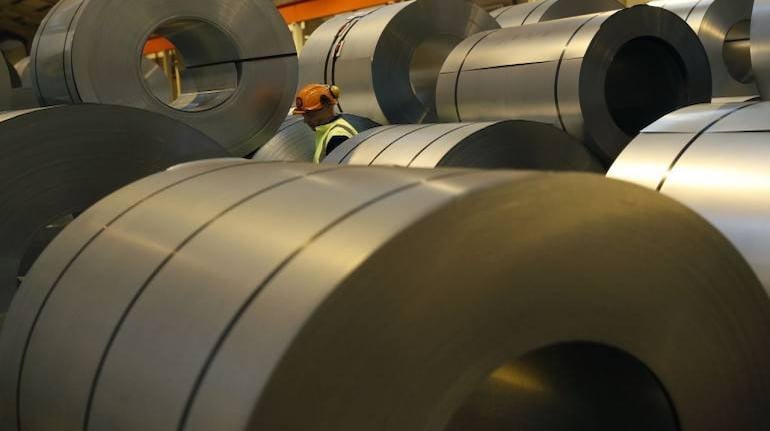
- Ad-Free Experience
- Actionable Insights
- MC Research
- Economic Calendar

You are already a Moneycontrol Pro user.
ESSAR STEEL CASE: SUPREME COURT LAYS DOWN THE LAW ON SECTION 29A OF THE BANKRUPTCY CODE

Home | Knowledge Center | Thought Papers ESSAR STEEL CASE: SUPREME COURT LAYS DOWN THE LAW ON SECTION 29A OF THE BANKRUPTCY CODE
12th Oct, 2018
- Corporate and M&A ,
- Corporate Restructuring & Insolvency
- /our-partners/ /"> ,

In this paper...
- Introduction
- A quick rewind
- What is Section 29A?
- Applying a 400-year-old principle of interpretation for interpreting Section 29A
- Lifting the corporate veil
- Meaning of acting “jointly” and in “concert”
- The De Jure Test while interpreting the expression “management”
- Meaning of “control”
- Test of ‘reasonable proximate state of affairs’ and reference date for determining eligibility
- Speed is of essence
- Challenging a CIRP
- Role of Resolution Professional
Introduction
Since December 2016 when the provisions on corporate insolvency resolution process (“ CIRP ”) in the Insolvency and Bankruptcy Code, 2016 (“ IBC ”) were notified, the Supreme Court of India (“ SC ”) has been called upon more than 40 times to decide on various issues emanating from matters being resolved under the IBC.
Under the scheme of the IBC [1] , SC hears appeals from the National Company Law Appellate Tribunal (“ NCLAT ”). Apart from this appellate jurisdiction, SC is also vested with an extraordinary constitutional jurisdiction under Article 142 of the Constitution of India to render “complete justice in any cause or matter pending before it”. Such an extraordinary jurisdiction is not vested in the tribunals or the High Courts.
Article 142(1) of the Constitution provides:
“The Supreme Court in exercise of its jurisdiction may pass such decree or make such order as is necessary for doing complete justice in any cause or matter pending before it, and any decree so passed or order so made shall be enforceable throughout the territory of India in such manner as may be prescribed by or under any law made by Parliament and, until provision in that behalf is so made, in such manner as the President may by order prescribe.”
So far, while hearing matters under the IBC, SC has used its extraordinary jurisdiction under Article 142 for granting relief to home buyers in projects floated by Jaypee Infratech Limited (“Jaypee Case”) [2] and permitting settlements between creditors and corporate debtors. In the Jaypee Case, while exercising jurisdiction under Article 142, Justice Chandrachud speaking on behalf of a 3-Judge Bench, cautioned that SC should not substitute mechanisms which have already been set out in the IBC [3] .
Recently in its judgment dated October 4, 2018, SC thought it fit to again use its extraordinary jurisdiction under Article 142 in the ongoing CIRP of Essar Steel India Limited (“ ESIL ”) [4] (“ Essar Steel Case ”).
In the Essar Steel Case [5] , SC concluded that that both ArcelorMittal India Private Limited (“ ArcelorMittal ”) and Numetal Limited (“ Numetal ”) were not eligible to bid for ESIL under the IBC. However, using its power under Article 142, SC gave an opportunity to both ArcelorMittal and Numetal to pay off dues relating to the non-performing assets (“ NPA ”) of their related corporate debtors in order to become eligible to bid for ESIL. Two reasons have been given by SC in providing such an opportunity: firstly, SC felt that this would do ‘complete justice’ in the matter, and secondly, the law on section 29A of the IBC (“ Section 29A ”) (which sets out the criteria for determining eligibility of a resolution applicant) has been laid down for the first time by this judgment. Therefore, it is certainly not a given that bidders in other matters would be given such opportunities.
In rendering its landmark decision, SC touched upon various issues under Section 29A and in doing so, as mentioned in the judgment itself, laid down the law on Section 29A for the first time.
This paper analyses the Essar Steel Case and some of the finer points of law that emerge from SC’s decision.
A quick rewind
Before discussing SC’s judgment, a quick narration of facts [6] leading up to the decision is given below:
- August 2, 2017 : National Company Law Tribunal (“ NCLT ”), Ahmedabad Bench admitted a petition filed against ESIL by its financial creditors for a debt of around Rs. 45,000 crores; and CIRP of ESIL commenced.
- October 11, 2017 : ArcelorMittal submitted an expression of interest for submitting a resolution plan for the revival of ESIL (“ EOI ”).
ArcelorMittal has a connected person, namely ArcelorMittal Netherlands B.V. (“ AM Netherlands ”), which held 29.05% in Uttam Galva Steels Limited (“ Uttam Galva ”) and was disclosed as a promoter of Uttam Galva. Uttam Galva’s account was classified as an NPA on March 31, 2016 by Canara Bank and Punjab National Bank.
Also in 2011, the LN Mittal Group, promoters of ArcelorMittal, had acquired shares of KSS Global BV which controlled KSS Petron Private Limited (“ KSS Petron ”). KSS Petron was classified as an NPA by multiple banks.
- October 20, 2017 : Numetal submitted an EOI.
Numetal was incorporated 7 days before submission of the EOI. At the time of incorporation 100% of the share capital of Numetal was held by Aurora Enterprises Limited (“ AEL ”) which was held by Rewant Ruia through various companies and trusts. Rewant Ruia’s father Ravi Ruia is the promoter of ESIL whose account was classified as an NPA. Before submitting the EOI, on October 18, 2017, AEL transferred its shareholding of 26.1% in Numetal to a group company, viz., Essar Communications Limited. This group company was ultimately owned by ‘Virgo Trust’ and ‘Triton Trust’, the beneficiaries of which are companies owned by Ravi Ruia, his brother Shashikant Ruia and their immediate family members.
- November 23, 2017 : IBC was amended by an Ordinance. Section 29A was inserted which, inter alia, disqualified a person from submitting a resolution plan for a corporate debtor, if such person was a promoter or was in the management or control of companies which were classified as NPAs atleast 1 year prior to the commencement of a CIRP.
One day before the introduction of Section 29A i.e. on November 22, 2017, shares of Numetal were transferred such that AEL held 25% of Numetal. VTB Bank’s subsidiary, Crinium Bay, held 40%, Indo International Trading FZCO held 25.1% and Tyazhpromexport (a wholly owned subsidiary of the Russian State Corporation called Rostec) held 9.9% in Numetal. Rs. 500 crores was given by AEL to Numetal so that it could deposit the requisite earnest money that had to be made along with the resolution plan furnished by Numetal. This amount continues to be deposited with the resolution professional (“RP”).
- February 7, 2018 : AM Netherlands sold its shares in Uttam Galva to other promoters of Uttam Galva and later on February 8, 2018 applied to the stock exchanges for being declassified as a promoter.
- February 9, 2018 : LN Mittal Group divested its shares in KSS Petron and nominee directors of ArcelorMittal on the board of directors of KSS Petron resigned.
- February 12, 2018 : Both ArcelorMittal and Numetal submitted resolution plans for ESIL.
- March 20, 2018 : Apprehending that it would be declared ineligible, Numetal filed an application before NCLT seeking that it be declared eligible as a resolution applicant.
- March 23, 2018 : The RP appointed for ESIL found both ArcelorMittal and Numetal ineligible to submit a resolution plan for ESIL as on February 12, 2018 under Section 29A.
Numetal was found ineligible on the ground that as on the date of submission of the resolution plan, it was acting in concert with Rewant Ruia and his father who is a promoter of ESIL. Rewant Ruia through AEL controlled 25% of Numetal.
ArcelorMittal was found ineligible on the ground that regulatory compliances relating to declassification of AM Netherlands (a connected person of ArcelorMittal) as a promoter of Uttam Galva was not complete. As mentioned above, Uttam Galva had been declared as an NPA.
- April 2, 2018 : Pursuant to the RP’s invitation, fresh resolution plans were submitted by ArcelorMittal, Numetal and a new resolution applicant, Vedanta Resources Limited.
Before submitting its resolution plan, AEL sold its shareholding to Indo International Trading FZCO and JSC VO Tyazhpromexport. Thus, AEL held no shares in Numetal as on the date of submission of the second resolution plan.
- April 19, 2018 : NCLT held that to determine eligibility, the date of commencement of the CIRP of ESIL i.e. August 2, 2017 should have been seen. It was held that the committee of creditors of ESIL (“COC”) and RP did not follow due procedure while rejecting the bids of ArcelorMittal and Numetal. The RP and COC were directed to give an opportunity to both the bidders to remove their disability by paying the overdue amounts.
- May 8, 2018 : The COC found both ArcelorMittal and Numetal ineligible. COC held that in order to be considered eligible, both the bidders should pay the overdue amounts and interest pertaining to the NPAs of their related corporate debtors.
- September 7, 2018 : NCLAT pronounced its order in the appeal filed against the order of NCLT. NCLAT held the following:
- At the time of submission of the first resolution plan on February 12, 2018, Numetal was not eligible under Section 29A as AEL (held by Rewant Ruia) was one of the shareholders of Numetal. However, at the time of submission of the second resolution plan on March 29, 2018, Numetal was eligible to submit a resolution plan as AEL was no longer a shareholder, and the remaining shareholders were eligible under Section 29A.
- AM Netherlands (a related party of ArcelorMittal) was the promoter of Uttam Galva on the date when Uttam Galva was classified as an NPA. Even though AM Netherlands sold its shares in Uttam Galva thereafter, it would continue to be ineligible till payment of all overdue amounts with interest and charges relating to NPA account of Uttam Galva is made. Further, LN Mittal Group (a connected person of ArcelorMittal) had been the promoter and in the management and control of KSS Petron since 2011. KSS Petron has been classified as an NPA by several banks. By merely selling all shares in KSS Petron, the ineligibility under Section 29A cannot be cured till payment of all overdue amounts with interest and charges relating to NPA account of KSS Petron is made.
Against the order of NCLAT, an appeal was filed before the SC.
What is Section 29A?
When the IBC was first enacted, it provided that any person could be a resolution applicant for submitting a resolution plan for the corporate insolvency resolution of a corporate debtor. No specific eligibility criteria were prescribed. This led to a situation where promoters of corporate debtors which had defaulted in payments (and were largely seen as being responsible for the downfall of the company) were bidding for the same corporate debtor at a discount. In order to prevent such promoters of defaulting companies from submitting resolution plans, the Government of India introduced an ordinance for amending the IBC on November 23, 2017 (“ Ordinance ”). The Ordinance introduced Section 29A setting out the eligibility criteria which must be satisfied in order for a person to be able to submit a resolution plan. The Ordinance was replaced by the Insolvency and Bankruptcy Code (Amendment) Act, 2018 on January 18, 2018 (“ First Amendment ”).
Section 29A as introduced by the First Amendment provided that a person will not be eligible to submit a resolution plan if such person or any other person acting jointly or in concert with such person or any connected person of such person fell within any of the criteria specified in Section 29A [7] .
Notably, pursuant to sub-section (c) of Section 29A, if a person has an account classified as an NPA or is in the management or control or a promoter of a company which has an account classified as an NPA, and if 1 year has lapsed from the date of such classification till the date of commencement of the CIRP of a corporate debtor, then such person is disqualified from submitting a resolution plan for the corporate debtor. In fact, as mentioned above, the person will also be disqualified if any other person acting jointly or in concert with such person or any connected person of such person has such an NPA account. This sub-section (c) has been the main focus of the Essar Steel Case [8] .
Section 29A underwent further changes subsequently pursuant to the Insolvency and Bankruptcy Code (Amendment) Ordinance, 2018 promulgated on June 6, 2018 as replaced by the Insolvency and Bankruptcy Code (Second Amendment) Act, 2018 (“ Second Amendment ”). As far as sub-section (c) of Section 29A is concerned, the said amendment, inter alia, replaced the words “has an account” with “at the time of submission of the resolution plan has an account”.
Section 29A(c) currently reads as follows:
“A person shall not be eligible to submit a resolution plan, if such person, or any other person acting jointly or in concert with such person –
(a) …
(b) …
(c) [at the time of submission of the resolution plan] [9] has an account, or an account of a corporate debtor under the management or control of such person or of whom such person is a promoter, classified as non-performing asset in accordance with the guidelines of the Reserve Bank of India issued under the Banking Regulation Act, 1949 (10 of 1949) or the guidelines of a financial sector regulator issued under any other law for the time being in force, and at least a period of one year has lapsed from the date of such classification till the date of commencement of the corporate insolvency resolution process of the corporate debtor:
Provided that the person shall be eligible to submit a resolution plan if such person makes payment of all overdue amounts with interest thereon and charges relating to nonperforming asset accounts before submission of resolution plan:
Provided further that nothing in this clause shall apply to a resolution applicant where such applicant is a financial entity and is not a related party to the corporate debtor.
Explanation I.- For the purposes of this proviso, the expression "related party" shall not include a financial entity, regulated by a financial sector regulator, if it is a financial creditor of the corporate debtor and is a related party of the corporate debtor solely on account of conversion or substitution of debt into equity shares or instruments convertible into equity shares, prior to the insolvency commencement date.
Explanation II.— For the purposes of this clause, where a resolution applicant has an account, or an account of a corporate debtor under the management or control of such person or of whom such person is a promoter, classified as non-performing asset and such account was acquired pursuant to a prior resolution plan approved under this Code, then, the provisions of this clause shall not apply to such resolution applicant for a period of three years from the date of approval of such resolution plan by the Adjudicating Authority under this Code;
(d) …”
Applying a 400-year-old principle of interpretation for interpreting Section 29A
The main issue in the Essar Steel Case revolved around whether ArcelorMittal and Numetal were eligible under Section 29A; specifically, under sub-section (c) [10] . Faced with deciding on this issue and interpreting Section 29A, SC adopted the principle of purposive interpretation of Section 29A, stating that the “text and the context in which the provision was enacted” should inform its interpretation. In doing so, SC (relying on an earlier decision in 2017 [11] ) moved away from the literal rule of interpretation to go back to a rule of interpretation laid down in an old English case [12] more than 400 years ago, according to which the Court must have recourse to the purpose, object, text and context of a particular provision before arriving at a judicial result.
A reading of the recent decisions of SC would indeed indicate that the pendulum is swinging towards a purposive method of interpretation from the literal rule of interpretation. However, the issue that arises is, when should purposive interpretation be adopted.
Recently, a Constitution Bench of SC [13] , called upon to interpret the meaning of ‘corrupt practices’ in the Representation of People Act, 1951, noted that if a statute is well-drafted and debated in Parliament, there is little or no need to adopt any interpretation other than a literal interpretation of the statute. However SC noted that, in a welfare State like ours, what is intended for the benefit of the people is not fully reflected in the text of a statute and in such legislations, a pragmatic view is required to be taken, and the law interpreted purposefully and realistically so that the benefit reaches the masses. In another matter, a Constitution Bench of SC [14] held that if a literal interpretation appears to be in any way in conflict with the legislative intent or is leading to absurdity, purposive interpretation will have to be adopted. SC also approved the observations that it is nowadays misleading to draw a rigid distinction between literal and purposive approaches.
In the Essar Steel Case, applying the principles of purposive interpretation, SC reasoned that Section 29A needs to be construed against the Statement of Objects and Reasons set out by the legislature while enacting the provision.
Section 29A comprises several elements, some of which are not defined or explained in the statute itself. For interpreting these elements, as discussed in the subsequent paragraphs, SC has correctly applied the principles of purposive interpretation.
Lifting the corporate veil
A company is a separate legal entity from its shareholders and it is settled law that the corporate veil of a company can be pierced to see the persons behind it only in limited circumstances. In the Essar Steel Case, SC held that when determining whether a company is eligible, considering the parameters in Section 29A, the corporate veil of the company has to be lifted to see the persons behind it.
After going through various precedents, SC held that the corporate veil of a company can be pierced in 3 situations: where a statute itself lifts the corporate veil, or where protection of public interest is of paramount importance, or where a company has been formed to evade obligations imposed by the law. SC extended this principle and held that this is to be applied even to group companies, so that one is able to look at the economic entity of the group as a whole.
Considering the purpose of Section 29A (i.e. to keep out undesirable persons from bidding as a resolution applicant), it is clear that the persons behind a resolution applicant have to be seen, and such persons (if otherwise ineligible) cannot be allowed to hide behind complex structuring. However, what is interesting in Section 29A is that, the way the section is drafted, perhaps even without lifting the corporate veil, it would be difficult for an otherwise ineligible person to hide behind a resolution applicant. This is because, the ineligibility criteria under Section 29A are required to be tested not only against the resolution applicant, but also against a wide gamut of persons, namely:
- persons acting jointly with the resolution applicant;
- persons acting in concert with the resolution applicant;
- connected persons of the resolution applicant [15] i.e.
- any person who is the promoter or in the management or control of the resolution applicant;
- any person who shall be the promoter or in management or control of the business of the corporate debtor during the implementation of the resolution plan;
- the holding company, subsidiary company, associate company and related party of any person who is the promoter or in the management or control of the resolution applicant [16] ; and
- the holding company, subsidiary company, associate company and related party of any person who shall be the promoter or in management or control of the business of the corporate debtor during the implementation of the resolution plan [17] .
In the Essar Steel Case, SC held that since Numetal itself relied entirely on the credentials of each of its constituent shareholders to satisfy the minimum tangible net worth requirement which was prescribed in the request for proposal, Numetal itself lifted its corporate veil; thereby the 4 entities who were shareholders of Numetal at the time of submission of the first resolution plan were acting jointly with Numetal. As mentioned above, under Section 29A, the eligibility of persons acting jointly or in concert with the resolution applicant is also required to be tested. SC has held that this is “a typical instance of a see through provision, so that one is able to arrive at persons who are actually in ‘control’, whether jointly, or in concert, with other persons”.
A question that may arise in future cases in light of SC’s observations on this matter is: Should shareholders of a resolution applicant be considered as acting jointly with the resolution applicant in all cases or only in cases such as Numetal (i.e. where a resolution applicant is newly incorporated and relies on its shareholders for satisfying the criteria under the request for proposals floated by the RP)?
SC also lifted the corporate veil while determining the eligibility of ArcelorMittal, and concluded that ultimately Mr. L.N. Mittal manages and controls ArcelorMittal, AM Netherlands (which was a promoter of Uttam Galva) and Fraseli (which was found to be in joint control of KSS Petron). Since, Uttam Galva and KSS Petron’s accounts were classified as NPAs by multiple banks atleast 1 year prior to the commencement of ESIL’s CIRP, hence ArcelorMittal was ineligible under Section 29A.
Meaning of acting “jointly” and in “concert”
The eligibility of persons acting jointly or in concert with the resolution applicant is required to be tested under Section 29A.
Acting jointly: SC once again adopted an expansive interpretation to hold that all that is to be seen by the expression “acting jointly” is whether certain persons have got together and are acting “jointly” in the sense of acting together and if this is made out on the facts, no super added element of “joint venture” is required to be seen.
Acting in concert: The meaning of ‘acting in concert’ is not explained in the IBC. SC therefore referred to the definition of ‘persons acting in concert’ in regulation 2(1)(q) of the Securities and Exchange Board of India (Substantial Acquisition of Shares and Takeovers) Regulations, 2011 (“ Takeover Regulations ”). As per the said definition, ‘persons acting in concert’ are persons who, with a common objective or purpose of acquisition of shares or voting rights in, or exercising control over a target company, pursuant to an agreement or understanding, formal or informal, directly or indirectly co-operate for acquisition of shares or voting rights in, or exercise of control over the target company. SC held that any understanding, even if it is informal, and even if it is to indirectly cooperate to exercise control over a target company, is included.
However, merely lifting the meaning of the term from the Takeover Regulations may not answer all questions.
What is important to note is that under the Takeover Regulations, the term ‘persons acting in concert’ has been defined in the context of persons acting in concert with the purpose of acquisition of shares or voting rights or exercising control over a target company. The question that arises is, when using the term in the context of Section 29A, what is the purpose that should be seen.
In its judgment, SC has not expressly mentioned that persons would be deemed to be acting in concert for the purposes of Section 29A if they are acting for a specific purpose. SC appears to have favoured a broader interpretation and has held that the language evinces an intention to rope in all persons who may be acting in concert with the person submitting a resolution plan (paragraph 28). SC has also observed that wherever persons act jointly or in concert with the ‘person’ who submits a resolution plan, all such persons are covered by Section 29A (paragraph 39). A reading of paragraphs 29 and 54 of the judgement may however indicate that the purpose to be seen is the purpose of submitting a resolution plan [18] .
SC has also clarified that a fortuitous relationship coming into existence by accident or chance cannot amount to “persons acting in concert”.
The De Jure Test while interpreting the expression “management”
In its judgment, SC also delved into the meaning of the word ‘management’. As mentioned above, under Section 29A(c), a person is, inter alia, ineligible if such person has an account of a corporate debtor, which is under the management of such person, and which is classified as an NPA for atleast 1 year [19] .
While interpreting Section 29A(c), SC has held that the expression ‘management’ would refer to the de jure management of a corporate debtor which would ordinarily vest in a board of directors, and would include, ‘manager’, ‘managing director’ and ‘officer’ as defined in the Companies Act, 2013.
‘De jure’ is a Latin phrase meaning ‘by law’, ‘as a matter of law’ etc. [20] and is in contradiction to the phrase ‘de facto’ which means ‘in fact, in reality, in actual existence, force or possession as a matter of fact’ [21] .
Though SC has interpreted the expression ‘management’ in the context of Section 29A(c), it would be interesting to see whether the same meaning would be attached when interpreting the expression as used in the definition of ‘connected person’ in Explanation I to Section 29A. As per the definition of a ‘connected person’, a person who is in the management of a resolution applicant is deemed to be a connected person of the resolution applicant, and accordingly if such person is ineligible under any of the provisions of Section 29A, then the resolution applicant would become ineligible. If the de jure test is applied, then all directors on the board of directors of a resolution applicant (including independent directors and nominee directors who may not be in the day-to-day management of the resolution applicant) would have to pass the test of Section 29A; and this would also mean that all related parties of such directors would be tested against Section 29A. The definition of a ‘related party’ is reproduced in Annexure B.
Meaning of “control”
Under Section 29A(c), a person is, inter alia, ineligible if such person has an account of a corporate debtor, which is under the control of such person, and which is classified as an NPA for atleast 1 year [22] .
The expression ‘control’ is not defined in the IBC. SC referred to the definition of ‘control’ in the Companies Act, 2013 to interpret the expression. The definition in the Companies Act, 2013 is as follows:
Control shall include the right to appoint majority of the directors or to control the management or policy decisions exercisable by a person or persons acting individually or in concert, directly or indirectly, including by virtue of their shareholding or management rights or shareholders agreements or voting agreements or in any other manner.
SC held that the first part of the definition i.e. the right to appoint majority of the directors refers to de jure control. The second part of the definition refers to de facto control. Importantly, SC held that the expression ‘control’, in Section 29A(c), denotes only positive control, “which means that the mere power to block special resolutions of a company cannot amount to control”.
While holding that ‘control’ in Section 29A(c) would mean positive control and not negative control, SC also relied on the expression ‘under’ in the phrase ‘under the management or control of such person’ appearing in Section 29A(c), stating that the expression ‘under’ would seem to suggest positive or proactive control, as opposed to mere negative or reactive control.
Interestingly, though the expression ‘under’ is used for both ‘management’ and ‘control’, SC held that ‘control’ would mean de jure or de facto proactive or positive control of actual management or policy decisions that can be or are in fact taken; whereas as discussed above, the expression ‘management’ has been interpreted to mean de jure management.
One may be tempted to apply the interpretation adopted by SC, while interpreting the meaning of ‘control’ under the Takeover Regulations. In fact, SC seems to have even approved the observation of the Securities Appellate Tribunal in a case under the Takeover Regulations where it was held that control means positive control [23] . However, SC has also indicated that ‘control’ may include ‘negative control’ from “an expansive reading of the definition of the word “control” contained in Section 2(27) of the Companies Act, 2013, which is inclusive and not exhaustive in nature”. The definition of ‘control’ in the Takeover Regulations is similar to the one in the Companies Act, 2013. Hence, what would constitute control for the purposes of the Takeover Regulations, would depend on the facts and is a question which is open.
The expression ‘control’ was relevant in the Essar Steel Case to, inter alia, determine whether Fraseli, a company managed and controlled by Mr. L.N. Mittal, and holding one-third of the shares in KSS Global, which in turn held 100% of the share capital in KSS Petron, was in joint control of KSS Petron (which is an NPA account). SC held that if the corporate veils of all these companies were disregarded, Fraseli would be found to be in joint control of KSS Petron. In reaching this conclusion, SC relied on the shareholding of Fraseli in KSS Global (which was about one-third of the total capital), and a shareholders agreement which granted Fraseli the right to appoint an equal number of directors as the other 2 shareholders of KSS Global and also granted Fraseli affirmative voting rights. SC held that this would show that a group company of Mr. L.N. Mittal exercised positive control over KSS Global which in turn held 100% shareholding in KSS Petron.
The judgment does not elaborate on the nature of affirmative voting rights which were enjoyed by Fraseli, but interestingly, from NCLT’s order it appears that the lawyers from the RP had opined that Fraseli had negative control. Hence, perhaps, even for the purposes of Section 29A(c), what constitutes ‘control’ can still be subject to debate.
Finally, ArcelorMittal was found to be ineligible under Section 29A(c) by SC since: (i) KSS Petron was classified as an NPA account, (ii) Fraseli was found to be in joint control of KSS Petron on the grounds described above, (iii) Fraseli was found to be managed and controlled by Mr. L.N. Mittal, and (iii) Mr. L.N. Mittal is the ultimate shareholder of ArcelorMittal.
Test of ‘reasonable proximate state of affairs’ and reference date for determining eligibility
One major issue decided by SC is whether the eligibility of a resolution applicant under Section 29A(c) should be determined as on the date when a resolution plan is submitted or as on the date when the CIRP of a corporate debtor commences. Earlier NCLT had indicated that it should apply when the CIRP of a corporate debtor commences.
SC settles this question by categorically stating that “the stage of ineligibility attaches when the resolution plan is submitted by a resolution applicant”. The implication of this is that on the date when a resolution plan is submitted, the resolution applicant or any person acting jointly or in concert with the person or any connected person of the resolution applicant should not have an account classified as an NPA [24] . Also such person should not be in the management or control of a corporate debtor or be a promoter of a person which has an NPA account.
However, though SC categorically states that the date of submission of a resolution plan is required to be seen to determine eligibility, SC introduces the test of ‘reasonable proximate state of affairs’ to determine the date on which ineligibility attaches. According to this test, antecedent facts reasonably proximate to the time of submission of a resolution plan can be seen to determine eligibility. SC has clarified that it has to be seen on the facts of a case as to whether at a reasonably proximate point of time before the submission of a resolution plan, a person arranges its affairs with the intention to avoid paying off the debts of NPA account before submitting a plan (as is required under Section 29A). In such a case, the person would be held ineligible unless the person pays off such dues. In doing so SC adopts the principle of purposive interpretation.
The following observations in the judgment are important:
“It is important for the competent authority to see that persons, who are otherwise ineligible and hit by sub-clause (c), do not wriggle out of the proviso to sub-clause (c) by other means, so as to avoid the consequences of the proviso. For this purpose, despite the fact that the relevant time for the ineligibility under subclause (c) to attach is the time of submission of the resolution plan, antecedent facts reasonably proximate to this point of time can always be seen, to determine whether the persons referred to in Section 29A are, in substance, seeking to avoid the consequences of the proviso to sub-clause (c) before submitting a resolution plan. If it is shown, on facts, that, at a reasonably proximate point of time before the submission of the resolution plan, the affairs of the persons referred to in Section 29A are so arranged, as to avoid paying off the debts of the non-performing asset concerned, such persons must be held to be ineligible to submit a resolution plan, or otherwise both the purpose of the first proviso to sub-section (c) of Section 29A, as well as the larger objective sought to be achieved by the said sub-clause in public interest, will be defeated.” (emphasis added)
SC held that “great care must be taken to ensure that persons who are in charge of the corporate debtor for whom such resolution plan is made, do not come back in some other form to regain control of the company without first paying off its debts”. A person can no longer adopt innovative structuring to escape the provisions of Section 29A(c).
Intent of a resolution applicant therefore becomes important. If a resolution applicant restructures its affairs only to escape the provisions of Section 29A, then the ineligibility would apply. The Essar Steel Case is a perfect example of this:
- In ArcelorMittal’s case, SC found that AM Netherland’s shares in Uttam Galva were sold only in order to get out of the ineligibility mentioned by Section 29A(c). Similarly in the case of KSS Petron it was found that shares were sold and nominee directors resigned reasonably proximate to the date of submission of the resolution plan.
- In case of Numetal, though AEL (Rewant Ruia’s company) exited Numetal completely before the submission of its second resolution plan in April 2018, SC applied the test of ‘reasonable proximate state of affairs’ to hold Numetal ineligible because “having regard to the reasonably proximate state of affairs before submission of the resolution plan on 2.4.2018, beginning with Numetal’s initial corporate structure, and continuing with the changes made till date, it is evident that, the object of all the transactions that have taken place after Section 29A came into force on 23.11.2017 is undoubtedly to avoid the application of Section 29A(c), including its proviso”. Hence, though as on the date of submission of its second resolution plan, Numetal was technically not ineligible under Section 29A, however, SC considered Numetal’s shareholders and other affairs at a time reasonably proximate to the time of submission of a resolution plan to hold Numetal ineligible. SC also took note of the fact that an earnest money of Rs. 500 crores which was deposited by AEL continued to remain deposited even as on the date of submission of the second resolution plan. SC thus found Rewant Ruia’s ‘looming presence’ all along.
Another reason to support a purposive interpretation of Section 29A(c), though not discussed in the judgment, is the language of the proviso to the said sub-section. The proviso essentially states that if a resolution applicant is found to be ineligible by virtue of Section 29A(c), then such person can cure the ineligibility by paying off all overdue amounts with interest thereon and charges relating to the NPA before submission of a resolution plan. Hence, the proviso requires one to examine a person’s eligibility before submission of a resolution plan and categorically states that the only way to cure such ineligibility is by paying off the dues before submission of a resolution plan. Therefore, one may argue that though under sub-section (c) it has to be seen whether on the date of submission of a resolution plan, a person is eligible, however, facts antecedent to the date of submission are also relevant.
Speed is of essence
SC has unequivocally stated that the time period set out in the IBC for completion of CIRP is mandatory. It has to be completed within a period of 180 days from the date of admission of the application. This time period is extendable by a maximum period of 90 days only if the committee of creditors, by a vote of 66%, votes to extend the said period, and only if the adjudicating authority is satisfied that such process cannot be completed within 180 days. Such extension cannot be granted more than once. SC has also clarified that the period of time taken in litigation ought to be excluded “where a resolution plan is upheld by the Appellate Authority, either by way of allowing or dismissing an appeal before it”.
SC also held that it is of utmost importance for all authorities concerned to follow the model timeline prescribed in the Insolvency and Bankruptcy Board of India (Insolvency Resolution Process for Corporate Persons) Regulations, 2016 as closely as possible.
Challenging a CIRP
One of the most important facets of SC’s judgment is the observations regarding challenges to a CIRP by a resolution applicant.
Section 60(5)(c) of the IBC states that notwithstanding anything to the contrary contained in any other law for the time being in force, NCLT shall have jurisdiction to entertain or dispose of any question of priorities or any question of law or facts, arising out of or in relation to the insolvency resolution or liquidation proceedings of the corporate debtor or corporate person under the IBC. At first brush, this section appears to vest the NCLT with broad powers without any limitation as to when it can entertain applications. However, in rendering its judgment on this issue, SC seems to have adopted a narrow interpretation of section 60(5)(c) of the IBC.
The key points which emerge from the judgment are as follows:
- If a resolution plan is turned down at the threshold by an RP under section 30(2) of the IBC (i.e. if the RP finds that a resolution plan does not meet the requirements specified under the said section [25] ), then no challenge can be preferred at this stage, whether to the adjudicating authority or a High Court.
- If, after a resolution plan is presented before the committee of creditors, the committee of creditors does not approve such a plan after considering its feasibility and viability, no application can be made before an adjudicating authority.
- If the committee of creditors disapproves a resolution plan on the ground that it violates the provisions of any law, including the ground that a resolution plan is ineligible under Section 29A, the adjudicating authority can determine the issue, after which an appeal can be preferred to the appellate authority.
- If the committee of creditors approves a resolution plan which is thereafter approved by the adjudicating authority, such approval can be challenged before the appellate authority.
- When section 60(5) of the IBC speaks of the NCLT having jurisdiction to entertain or dispose of any application or proceeding by or against the corporate debtor or corporate person, it does not invest the NCLT with the jurisdiction to interfere at an applicant’s behest at a stage before the quasi-judicial determination made by the adjudicating authority.
A resolution applicant’s ability to challenge the various processes has therefore been curtailed or rather deferred. The intent of the judgment is clear in as much as the entire process from the date of commencement of CIRP until approval or rejection of a resolution plan by the committee of creditors and determination by NCLT, should be completed without any challenges by a resolution applicant. Hence, an unsuccessful resolution applicant would have to wait till the entire process is complete. If this principle was to be applied to the Essar Steel Case, then both Numetal and ArcelorMittal would have to wait till the COC would have taken a decision in the third round of bidding and the matter was before NCLT (unless COC decided to go in for a fourth round of bidding, then after a decision was taken in such subsequent round).
Role of the Resolution Professional
The RP plays a central role in a CIRP. However, what exactly is the nature of the RP’s role and duties has been a matter of much debate.
Earlier NCLT had held that the nature of duties assigned to an RP is similar to a public servant and can be termed as an instrumentality of the State. Further, it was held that as an instrumentality of the State, the RP has to act in a transparent and fair manner and not take arbitrary decisions or adopt a discriminatory practice.
If the RP is considered an instrumentality of the State, then it would have significant consequences. The RP would be amenable to the writ jurisdiction of the High Court and SC i.e. a person can file a writ petition against the decision of the RP. However, in the Essar Steel Case not only did the SC make no such observation, as mentioned above, SC held that if the RP turns down a resolution plan determining that it does not comply with section 30(2), a challenge cannot even be preferred at this stage to the adjudicating authority as a resolution applicant has no vested right that his resolution plan be considered.
Importantly, SC has held that a RP is not required to take any decision on the issue of whether a resolution plan is in accordance with the conditions prescribed under the IBC. According to the judgment, the RP is only required to ensure that a resolution plan is complete in all respects. In light of these observations, a question arises as to whether, while examining a resolution plan under section 30(2) of the IBC, the RP exercises a quasi-judicial function which is appealable and where a right of hearing has to be mandatorily provided? In this regard a reference may be made to the decision of the SC in the case of Competition Commission of India v. Steel Authority of India Limited [26] (“CCI Case”). In the CCI Case, SC had held that when the Competition Commission of India forms an opinion about the existence of a prima facie case for contravention of certain provisions of the Competition Act, 2002 and passes a direction to the Director General to cause an investigation into the matter, it is an administrative direction without entering upon any adjudicatory process and does not effectively determine any right or obligation of the parties to the lis. Such a decision is not appealable and also in such cases a right of hearing is not contemplated.
The matter has certainly not concluded and the question that remains to be asked is what next? SC has categorically held that both Numetal and ArcelorMittal would have to pay off the NPAs of their respective corporate debtors within 2 weeks before their resolution plans are considered. For Numetal, this would include dues of ESIL as well as other Ruia group companies and is expected to be an amount in excess of Rs. 50,000 crores. The COC will then have a period of 2 months to consider their resolution plans and that of Vedanta Resources Limited.
Interestingly, SC has made it clear “that in the event that no plan is found worthy of acceptance by the requisite majority of the Committee of Creditors, the corporate debtor, i.e. ESIL, shall go into liquidation”. This effectively means that during the next 2 months, COC may not be able to invite fresh resolution plans should it decide that the existing bids will not result in maximization of value or are not feasible and viable, unless it seeks a clarification from SC. SC’s judgment also seems to indicate that the COC will have to consider only the resolution plans submitted on April 2, 2018, thereby effectively preventing a new bidder from entering the race. This is where another debate on process v. maximization of value may begin, and for that one would have to wait for the decision of SC in another matter !
This paper has been contributed by Adity Chaudhury, Partner.
Section 29A
29A. Persons not eligible to be resolution applicant
A person shall not be eligible to submit a resolution plan, if such person, or any other person acting jointly or in concert with such person--
- is an undischarged insolvent;
- is a wilful defaulter in accordance with the guidelines of the Reserve Bank of India issued under the Banking Regulation Act, 1949 (10 of 1949);
- at the time of submission of the resolution plan has an account, or an account of a corporate debtor under the management or control of such person or of whom such person is a promoter, classified as non-performing asset in accordance with the guidelines of the Reserve Bank of India issued under the Banking Regulation Act, 1949 (10 of 1949) or the guidelines of a financial sector regulator issued under any other law for the time being in force, and at least a period of one year has lapsed from the date of such classification till the date of commencement of the corporate insolvency resolution process of the corporate debtor:
Provided that the person shall be eligible to submit a resolution plan if such person makes payment of all overdue amounts with interest thereon and charges relating to non-performing asset accounts before submission of resolution plan;
Explanation I.-- For the purposes of this proviso, the expression "related party" shall not include a financial entity, regulated by a financial sector regulator, if it is a financial creditor of the corporate debtor and is a related party of the corporate debtor solely on account of conversion or substitution of debt into equity shares or instruments convertible into equity shares, prior to the insolvency commencement date.
Explanation II.-- For the purposes of this clause, where a resolution applicant has an account, or an account of a corporate debtor under the management or control of such person or of whom such person is a promoter, classified as non-performing asset and such account was acquired pursuant to a prior resolution plan approved under this Code, then, the provisions of this clause shall not apply to such resolution applicant for a period of three years from the date of approval of such resolution plan by the Adjudicating Authority under this Code;
- has been convicted for any offence punishable with imprisonment--
- for two years or more under any Act specified under the Twelfth Schedule; or
- for seven years or more under any other law for the time being in force:
Provided that this clause shall not apply to a person after the expiry of a period of two years from the date of his release from imprisonment:
Provided further that this clause shall not apply in relation to a connected person referred to in clause (iii) of Explanation I;
- is disqualified to act as a director under the Companies Act, 2013 (18 of 2013);
Provided that this clause shall not apply in relation to a connected person referred to in clause (iii) of Explanation I;
- is prohibited by the Securities and Exchange Board of India from trading in securities or accessing the securities markets;
- has been a promoter or in the management or control of a corporate debtor in which a preferential transaction, undervalued transaction, extortionate credit transaction or fraudulent transaction has taken place and in respect of which an order has been made by the Adjudicating Authority under this Code;
Provided that this clause shall not apply if a preferential transaction, undervalued transaction, extortionate credit transaction or fraudulent transaction has taken place prior to the acquisition of the corporate debtor by the resolution applicant pursuant to a resolution plan approved under this Code or pursuant to a scheme or plan approved by a financial sector regulator or a court, and such resolution applicant has not otherwise contributed to the preferential transaction, undervalued transaction, extortionate credit transaction or fraudulent transaction;
- has executed a guarantee in favour of a creditor in respect of a corporate debtor against which an application for insolvency resolution made by such creditor has been admitted under this Code and such guarantee has been invoked by the creditor and remains unpaid in full or part;
- is subject to any disability, corresponding to clauses (a) to (h), under any law in a jurisdiction outside India; or
- has a connected person not eligible under clauses (a) to (i).
Explanation I.-- For the purposes of this clause, the expression "connected person" means--
- any person who is the promoter or in the management or control of the resolution applicant; or
- any person who shall be the promoter or in management or control of the business of the corporate debtor during the implementation of the resolution plan; or
- the holding company, subsidiary company, associate company or related party of a person referred to in clauses (i) and (ii):
Provided that nothing in clause (iii) of Explanation I shall apply to a resolution applicant where such applicant is a financial entity and is not a related party of the corporate debtor:
Provided further that the expression "related party" shall not include a financial entity, regulated by a financial sector regulator, if it is a financial creditor of the corporate debtor and is a related party of the corporate debtor solely on account of conversion or substitution of debt into equity shares or instruments convertible into equity shares, prior to the insolvency commencement date;
Explanation II.-- For the purposes of this section, "financial entity" shall mean the following entities which meet such criteria or conditions as the Central Government may, in consultation with the financial sector regulator, notify in this behalf, namely:--
- a scheduled bank;
- any entity regulated by a foreign central bank or a securities market regulator or other financial sector regulator of a jurisdiction outside India which jurisdiction is compliant with the Financial Action Task Force Standards and is a signatory to the International Organisation of Securities Commissions Multilateral Memorandum of Understanding;
- any investment vehicle, registered foreign institutional investor, registered foreign portfolio investor or a foreign venture capital investor, where the terms shall have the meaning assigned to them in regulation 2 of the Foreign Exchange Management (Transfer or Issue of Security by a Person Resident Outside India) Regulations, 2017 made under the Foreign Exchange Management Act, 1999 (42 of 1999);
- an asset reconstruction company registered with the Reserve Bank of India under section 3 of the Securitisation and Reconstruction of Financial Assets and Enforcement of Security Interest Act, 2002 (54 of 2002);
- an Alternate Investment Fund registered with the Securities and Exchange Board of India;
- such categories of persons as may be notified by the Central Government.
Related Party
5 (24) “Related party”, in relation to a corporate debtor, means -
- a director or partner of the corporate debtor or a relative of a director or partner of the corporate debtor;
- a key managerial personnel of the corporate debtor or a relative of a key managerial personnel of the corporate debtor;
- a limited liability partnership or a partnership firm in which a director, partner, or manager of the corporate debtor or his relative is a partner;
- a private company in which a director, partner or manager of the corporate debtor is a director and holds along with his relatives, more than two per cent. of its share capital;
- a public company in which a director, partner or manager of the corporate debtor is a director and holds along with relatives, more than two per cent. of its paid- up share capital;
- anybody corporate whose board of directors, managing director or manager, in the ordinary course of business, acts on the advice, directions or instructions of a director, partner or manager of the corporate debtor;
- any limited liability partnership or a partnership firm whose partners or employees in the ordinary course of business, acts on the advice, directions or instructions of a director, partner or manager of the corporate debtor;
- any person on whose advice, directions or instructions, a director, partner or manager of the corporate debtor is accustomed to act;
- a body corporate which is a holding, subsidiary or an associate company of the corporate debtor, or a subsidiary of a holding company to which the corporate debtor is a subsidiary;
- any person who controls more than twenty per cent. of voting rights in the corporate debtor on account of ownership or a voting agreement;
- any person in whom the corporate debtor controls more than twenty per cent of voting rights on account of ownership or a voting agreement;
- any person who can control the composition of the board of directors or corresponding governing body of the corporate debtor;
- participation in policy making processes of the corporate debtor; or
- having more than two directors in common between the corporate debtor and such person; or
- interchange of managerial personnel between the corporate debtor and such person; or
- provision of essential technical information to, or from, the corporate debtor.
5 (24A) “Related party”, in relation to an individual, means –
- a person who is a relative of the individual or a relative of the spouse of the individual;
- a partner of a limited liability partnership, or a limited liability partnership or a partnership firm, in which the individual is a partner;
- a person who is a trustee of a trust in which the beneficiary of the trust includes the individual, or the terms of the trust confers a power on the trustee which may be exercised for the benefit of the individual;
- a private company in which the individual is a director and holds along with his relatives, more than two per cent. of its share capital;
- a public company in which the individual is a director and holds along with relatives, more than two per cent. of its paid-up share capital;
- a body corporate whose board of directors, managing director or manager, in the ordinary course of business, acts on the advice, directions or instructions of the individual;
- a limited liability partnership or a partnership firm whose partners or employees in the ordinary course of business, act on the advice, directions or instructions of the individual;
- a person on whose advice, directions or instructions, the individual is accustomed to act;
- a company, where the individual or the individual along with its related party, own more than fifty per cent. of the share capital of the company or controls the appointment of the board of directors of the company.
Explanation. - For the purposes of this clause, - (a) “relative”, with reference to any person, means anyone who is related to another, in the following manner, namely:-
- members of a Hindu Undivided Family,
- son’s daughter and son,
- daughter’s daughter and son,
- grandson’s daughter and son,
- granddaughter’s daughter and son,
- brother’s son and daughter,
- sister’s son and daughter,
- father’s father and mother,
- mother’s father and mother,
- father’s brother and sister,
- mother’s brother and sister; and
(b) wherever the relation is that of a son, daughter, sister or brother, their spouses shall also be included.

Adity Chaudhury
[1] Section 62 of the IBC.
[2] Chitra Sharma v. Union of India , 2018(9) SCALE 490.
[3] Justice Chandrachud held: “ We must particularly be careful not to supplant the mechanisms which have been laid down in the IBC by substituting them with a mechanism under judicial directions. Such a course of action would in our view not be consistent with the need to ensure complete justice under Article 142, under the regime of law.”
[4] ArcelorMittal India Private Limited v. Satish Kumar Gupta , Civil Appeal Nos. 9402 – 9405 of 2018, decided on October 4, 2018.
[6] The facts are based on information available in public domain and have not been factually verified.
[7] Section 29A is reproduced in Annexure A for ease of reference.
[8] Though SC’s judgment also deal with certain other sub-sections of Section 29A, this paper focuses mainly on the interpretation of sub-section (c).
[9] Inserted by the Second Amendment.
[10] Though SC’s judgment also deal with certain other sub-sections of Section 29A, this paper focuses mainly on the interpretation of sub-section (c).
[11] Ms. Eera Through Dr. Manjula Krippendorf v. State , (2017) 15 SCC 133.
[12] Heydon case , (1584) 3 Co Rep 7a : 76 ER 637.
[13] Abhiram Singh v. C.D. Commachen (Dead) by L.Rs. , (2017)2 SCC 629.
[14] Sarah Mathew v. Institute of Cardio Vascular Diseases by its Director K.M. Cherian , (2014)2 SCC 62.
[15] Defined in Explanation I to Section 29A.
[16] This will not apply to a financial entity which is not a related party of the corporate debtor.
[18] In paragraph 54, SC has held that as per the interpretation of Section 29A(c), any person who wishes to submit a resolution plan, if he or it does so acting jointly, or in concert with other persons, which person or other persons happen to either manage or control or be promoters of a corporate debtor, who is classified as a NPA and whose debts have not been paid off for a period of at least one year before commencement of the CIRP, becomes ineligible to submit a resolution plan.
In paragraph 29 of the judgment, SC has held that “it is important to discover in such cases as to who are the real individuals or entities who are acting jointly or in concert, and who have set up such a corporate vehicle for the purpose of submission of a resolution plan ” .
[19] Please refer to Annexure A, for the entire Section 29A.
[20] Vasant Rao v. Farooq-Ali , 1995(3) ALT 1 (Andhra Pradesh High Court).
[21] Rajasekhar v. Siddalingappa , ILR 1986 Karnataka 2765 .
[22] Please refer to Annexure A, for the entire Section 29A.
[23] Subhkam Ventures (I) Private Limited v. The Securities and Exchange Board of India , Appeal No. 8 of 2009 decided on January 15, 2010.
[24] Section 29A(c) also states that such person will be ineligible if he or it has an account, or an account of a corporate debtor under the management or control of such person or of whom such person is a promoter, classified as an NPA in accordance with the guidelines of the Reserve Bank of India issued under the Banking Regulation Act, 1949 or the guidelines of a financial sector regulator issued under any other law for the time being in force, and at least a period of 1 year has lapsed from the date of such classification till the date of commencement of the CIRP of the corporate debtor.
[25] Under section 30(2) of the IBC, the RP has to examine that the resolution plans received by the RP conform to the requirements prescribed, which are as follows:
- A resolution plan should provide for payment of insolvency resolution process costs in a manner specified by the Board in priority to the payment of other debts of the corporate debtor;
- a resolution plan should provide for the payment of the debts of operational creditors in such manner as may be specified by the Board which shall not be less than the amount to be paid to the operational creditors in the event of a liquidation of the corporate debtor under section 53;
- a resolution plan should provide for the management of the affairs of the corporate debtor after approval of the resolution plan;
- a resolution plan should provide for the implementation and supervision of the resolution plan;
- a resolution plan should not contravene any of the provisions of the law for the time being in force; and
- a resolution plan should confirm to such other requirements as may be specified by the Board.
[26] Competition Commission of India v. Steel Authority of India Limited , (2010)10 SCC 744.
Our Offices
11, 1st Floor, Free Press House 215, Nariman Point Mumbai – 400021
+91 22 67362222
7A, 7th Floor, Tower C, Max House, Okhla Industrial Area, Phase 3, New Delhi – 110020
+91 11 6904 4200
68 Nandidurga Road Jayamahal Extension Bengaluru – 560046
+91 80 46462300
Binoy Bhavan 3rd Floor, 27B Camac Street Kolkata – 700016
+91 33 40650155/56
The rules of the Bar Council of India do not permit advocates to solicit work or advertise in any manner. This website has been created only for informational purposes and is not intended to constitute solicitation, invitation, advertisement or inducement of any sort whatsoever from us or any of our members to solicit any work in any manner. By clicking on 'Agree' below, you acknowledge and confirm the following:
a) there has been no solicitation, invitation, advertisement or inducement of any sort whatsoever from us or any of our members to solicit any work through this website;
b) you are desirous of obtaining further information about us on your own accord and for your use;
c) no information or material provided on this website is to be construed as a legal opinion and use of this website will not create any lawyer-client relationship;
d) while reasonable care has been taken in ensuring the accuracy of the contents of the website, Argus Partners shall not be responsible for the results of any actions taken on the basis of information provided in this website or for any error or omission in the website; and
e) in cases where the user has any legal issues, the user must seek independent legal advice.
- Follow us on :

- PERSONAL FINANCE
- REAL ESTATE
- LEADERS OF TOMORROW
- Financial Reports
- Weight Loss
- Men's Fashion
- Women's Fashion
- Urban Debate
- Baking Recipes
- Breakfast Recipes
- Foodie Facts
- Healthy Recipes
- Seasonal Recipes
- Starters & Snacks
- Car Reviews
- Bike Reviews
- Cars First Look
- Bikes First Look
- Bike Comparisons
- Car Comparisons
- India Upfront
- Bollywood Fashion & Fitness
- Movie Reviews
- Planning & Investing
- Real Estate
- Inspiration Inc
- Cricket News
- ASIA CUP 2018
- Comparisons
- Business News >
Youngest Essar scion prepares $6bn all-cash bid to retain family steel biz
The report adds that an all-cash offer is likely to attract more attention for the lenders as competing offers are expected to have less cash component..
Mumbai : Essar co-founder Ravi Ruia's son is all set to bid $6 billion in cash to retain the family steel business. It has been learnt that a consortium, led the youngest Essar scion Rewant Ruia, is set to make an all-cash offer of $5-6 billion (approximately Rs 33,000 crore to Rs 40,000 crore) in order to retain Essar Steel. Nu Metal Corporation, led by the Rewant Ruia and backed by Russia's VTB as the largest stakeholder (40%), faces stiff competition in the bidding process from Arcelor Mittal and Nippon Steel, reports The Times of India.
The report adds that an all-cash offer is likely to attract more attention for the lenders as competing offers are expected to have less cash component. With over Rs 45,000 crore in debt to lenders, the company is in the middle of a turmoil but the Ruias would be aiming to stabilise the situation after placing a successful bid next week.
It may, however, be noted that a second Russian investor - an arm of Bain Capital - is expected to step in after Hong-Kong based SSG Capital pulled out of the Ruia-led consortium. While the consortium partners will be finalised soon, VTB is likely to take up the spot as it has strong business ties with the Ruias, apart from playing a key role in the sale of Essar Oil to Russia's Roseneft.
A $3 billion financing is expected from VTB and its allies to help Ruias place the all-cash offer. Essar, however, has declined to comment on the development. As mentioned earlier, the bids for Essar Steel will open next week, with several bigwigs in the industry eying the coveted entity.
From Tata Steel to Vedanta, several are expected to make lucrative offers. The Ruias are willing to spend such a huge amount on saving the steel business as India's metal market is predicted to almost triple to 300 million tonne-per-annum by the end of the next decade.
The report also highlights that Rewant and his brother Shashi Ruia will hold at least 26 percent in the consortium. Some other stakeholders of the Nu Metal Corporation include former SAIL chief SC Verma, an ex-RBI official, and a few core group executives. The consortium structure gives the Ruias to complete the auction process in a seamless manner, without violating certain rules that bar defaulting promoters.
It will also help the family steer clear a requirement where promoters must clear pending dues to be eligible to bid for their own assets. The report further adds that the bid will have to pass scrutiny of the insolvency board.
Get all latest Business News , Market News , Income Tax News , Share Market, Sensex Today live updates on Times Now
- Latest business & economy News
- Business News
- India Business News
Ravi Ruia’s son to lead $6bn all-cash offer for family steel
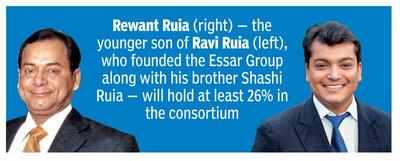
About the Author
Reeba Zachariah is assistant corporate editor at The Times of India, Mumbai. She has been covering large Indian business houses such as the Tata Group. She also reports on a host of sectors like hospitality, retail, travel, liquor and consumer durables. She has been writing on mergers and acquisitions and private equity. Read More
Visual Stories

PPF Calculator
This financial tool allows one to resolve their queries related to Public Provident Fund account.

FD Calculator
When investing in a fixed deposit, the amount you deposit earns interest as per the prevailing...

NPS Calculator
The National Pension System or NPS is a measure to introduce a degree of financial stability...

Mutual Fund Calculator
Mutual Funds are one of the most incredible investment strategies that offer better returns...

Other Times Group News Sites
Popular categories, hot on the web, trending topics, living and entertainment, latest news.
When was Essar founded?
The Essar Group was established by Mr. Shashi Ruia and Mr. Ravi Ruia in 1969, in South India. The company began its operations with the construction of an outer breakwater in Chennai port, an order worth Rs 2.5 crore. Until then, only foreign construction companies would undertake a project of this magnitude and complexity. However, Essar’s chosen policy was to get into areas of import substitution, high technology and national importance.

Who are the founders/owners of Essar?
In 1969, Shashi and Ravi Ruia founded the Essar Group. Shashi Ruia, a first-generation entrepreneur industrialist, has made invaluable contributions to the core industrial and infrastructure sectors in India and has steered Essar to a prominent position in the global industry. Ravi Ruia belongs to the generation of industrialists who have played a significant role in leading India’s industrial renaissance. An engineer by training, his entrepreneurial abilities have enabled the Essar Global portfolio of companies to become one of the leading names in global industry.
Who is the current owner of Essar?
The Ruia family is the founding Family of Essar which includes Mr Shashi Ruia and Mr Ravi Ruia, and their children Mr Prashant Ruia, Mr Anshuman Ruia, Ms Smiti Kanodia and Mr Rewant Ruia. Essar operates as the Essar Global Fund Limited which invests in building and nurturing assets, and creating value in the core sectors of Energy, Infrastructure, Metals & Mining and Technology & Retail. Essar Capital Limited (“Essar Capital”) is the investment manager of Essar Global Fund Limited (“EGFL”). It monitors and manages the entire portfolio of investments owned by EGFL, and is governed by its board of directors.
What are the 4 key sectors of Essar?
Essar Global Fund Limited (EGFL) is a global investor which owns a number of world-class assets diversified across the core sectors of energy (comprising energy transition, stanlow terminals, exploration and production, refining and marketing), infrastructure and & logistics (comprising ports, power and projects), metals and mining (comprising pellets, green flat steel, mining), technology and retail (comprising technology solutions and digital retail platforms).
What does Essar stand for?
The name Essar was derived from SR (S plus R sounds like Essar), which stands for Sashi and Ravi, the Ruia brothers. Sashi and Ravi Ruia are the founders of Essar Group, which is an Indian multinational corporation headquartered in Mumbai, Maharashtra, India.
What does Essar stand for? What are the names of Essar’s companies in core economy sectors?
Essar is a multinational company with operations in a variety of industries, including energy, infrastructure, logistics, metals, mining, manufacturing, tech & retail. The company is headquartered in Mumbai, India, and invests in core economy sectors. Following are few of Essar’s companies:
EET: Essar Energy Transition (EET) focuses its investments on hydrogen, decarbonisation, new energy infrastructure and biofuels, creating a fully integrated energy transition hub at Stanlow, United Kingdom.
EET Fuels: EET Fuels is a leading oil refinery in the United Kingdom. The 10 MTPA refinery caters to 16% of the UK’s road transport fuel demand. The company also operates a network of fuel stations in the UK and is poised to be one of the first low-carbon refineries in the world (Under EET initiative).
EET Hydrogen: Part of Essar Energy Transition (EET) initiative of Essar, EET Hydrogen is a leading provider of hydrogen solutions in the UK.
Stanlow Terminals: Stanlow Terminals is the UK’s largest independent bulk-liquid storage terminal, with over 3 million cbm of capacity across fuel types. Transitioning to new age sustainable fuel storage, Stanlow Terminals is also a key company within EET.
EEPL: Essar Exploration and Production Limited (EEPL). Its commitment to greener fuels such as coal bed methane has seen it become the first Indian E&P company to achieve over 1 MMSCMD of production. Its is key player in conventional and unconvetional hydrocarbons, with immense shale gas potential. It’s assets span India and Vietnam.
Ultra Gas & Energy: As a green-tech company Ultra Gas and Energy aims to catalyse adoption of clean fuels like LNG, Biofuels, Hydrogen & Electric. The company is disrupting clean energy marketing and distribution in India by building a pan-India network of Green Fuel Hubs that will provide closest access to a wide variety of clean fuels to both, industries & transport sector.
GreenLine: GreenLine, established in 2021, is at the forefront of providing innovative clean fuel logistics solutions. Its primary focus is on delivering Liquefied Natural Gas (LNG) and Compressed Natural Gas (CNG) to industries located in off-gas-grid areas. GreenLine is pioneering smart, green mobility in India, enabling corporates to decarbonise their freight transportation through a GreenLine’s fleet of LNG powered trucks.
Essar Ports: Essar Ports specialises in the development and operations of ports and terminals. They handle liquid, dry bulk, break bulk and general cargo. The company has invested US$ 1,500 mn+ in creating 168 MTPA Port capacity both the east and west coasts of India. At Salaya, India, the company operates 20 million metric tons per annum (MTPA) terminal. It now plans to do Cargo diversification to LNG, Liquid including Ammonia & containers.
Essar Power: As one of the pioneering private entities in the sector, Essar Power generates 1,285 MW of power through its plants situated in both India and Canada
Essar Projects: Continuing to advance the Essar vision of fostering comprehensive and impactful growth, Essar Projects has been at the forefront of providing innovative, large-scale engineering, procurement, and construction (EPC) solutions. With its value-driven approach, Essar Projects brings a unique owner’s perspective to project delivery. With expertise in diverse sectors, Essar Projects operates across India, Middle East, Europe, Sount-East Asia, Americas and some challenging geographies in Africa and Australasia.
KSA – Flat Steel: Situated in Ras-Al-Khair, Saudi Arabia, KSA Flat Steel complex will be a state-of-the-art integrated steel plant with 4 million metric tons per annum (MTPA) production capacity. The intergrated facility will be connected to a port facility and will be future-ready to manufacture green steel.
Essar Minmet: Essar Minmet is a 14-MTPA Iron Ore Pellet project in Odisha, India, which will cater to the rising steel demand. With a vision to produce environmentally compliant pellets, Minmet will deliver high quality pellets of DR and BF grade. In line with Essar’s ESG-centric policy, the facility will use state-of-the-art environment-friendly technology to ensure low carbon emission. Slurry pipeline, return water line, etc will also be installed to contribute to environment protection and conservation.
Mesabi Metallics: Mesabi Metallics Company LLC (MMCL), with 1.7 Bn tonnes resources, is setting up a world-class, fully integrated 7 MTPA DR grade iron ore pellet-making and beneficiation facility in Nashwauk, Minnesota.
PT MBL : PT MBL is a high grade thermal coal mine located in the rich coal belt region of East Kalimantan, Indonesia. With quality upwards of 5800 Kcal/Kg (sold at premium New Castle Index), it has a reserve base of 72 million tonnes of proven reserves, and another 15-20 million tonnes expected as upside.
Black Box: Black Box has established itself as a rapidly expanding global provider of digitalization and technology solutions. With a presence in over 35 countries, the company serves a prestigious clientele of over 8,000 clients, including more than 250 Fortune 500 companies.
Litmus: Litmus embodies Essar’s vision of digitally transforming infrastructure to enhance people’s lives. Powered by a proprietary framework focused on measurement, action, and improvement, Litmus is rapidly becoming a benchmark in driving customer experience (CX) transformation.
Pluckk: Pluckk is digital platform with a 24-hour farm-to-fork model offering assortment of 20+ categories and 300+ products ranging across fruits, vegetables, organics, hydrophonics and meal kits. Serving Mumbai, Delhi and Bengaluru presently, the company plans to expand to 15 cities pan India. It is the only FnV brand to ve certified ‘Plastic Neutral’ in India.
Essar Shipping: Essar Shipping has played a pivotal role in the initial stages of Essar’s journey, contributing to the company’s rich legacy. With a remarkable four decades of experience in owning and operating maritime assets, this Indian private sector shipping company has successfully managed operations on a significant scale.
Essar 2.0 represents Essar’s efforts to reposition its portfolio of businesses by transitioning existing asset to green, while investing in sector-transforming clean businesses in core economy sectors. The new-age investments of Essar are being made under the ESG-oriented themes of Decarbonisation, Decentralisation and Digitalisation.
Speareading Essar2.0 are businesses like Essar Energy Transition (EET), that pans investments in EET Fuels, EET Hydrogen, Stanlow Terminals and Biofuels, and will focus on hydrogen/ammonia/biofuels-led decarbonisation efforts. CBM, LNG and Green Steel ecosystems are being invested in through Essar Exploration & Production Limited, Ultra Gas & Energy, GreenLine, KSA Flat Steel, Essar Minmet, Essar Ports and Essar Power.
Essar 2.0 will showcase a much-transformed portfolio of new-age Essar Businesses that will be future-ready, sustainable, ESG-centric and will create value for all stakeholders for the next several decades.
What are the future plans of Essar?
Essar is fully dedicated to revolutionizing the sector by shifting from carbon-based to clean energy sources across all our current and future endeavors. We place great emphasis on the transition to clean energy and are committed to supporting decarbonasation targets of Nations. Our focus extends to exploring opportunities in hydrogen, solar, wind, biofuels, CBM, natural gas, green logistics, and green steel, where we leverage state-of-the-art technologies to enhance energy efficiency and reduce our carbon footprint. Our future plans entail buidling world-class infra and integrated ecosystems for providing Hydrogen, Green Steel and Green Mobility to the world. We closely monitor advancements in energy storage and transmission to ensure reliable energy access for our valued customers. Essar is thrilled to be part of this transformative journey towards a sustainable future.
What is the current investment portfolio of Essar?
Essar concentrates its investments in four core economy sectors. In the Energy sector, its investments comprise Essar Energy Transition (EET Fuels, EET Hydrogen, Stanlow Terminals, Biofuels), and Essar Exploration & Production. Essar’s portfolio in Infrastructure and logistics includes Essar Ports, Essar Projects, Essar Power and Ultra Gas & Energy. In Metals & Mining, Essar is involved in the development of Mesabi Metallics, PT MBL, Essar Minmet, and KSA – Green Flat Steel Complex. The fourth portfolio of Essar consists of Technology & Retail, encompassing Black Box (Formerly AGC Networks Ltd.), LitmusWorld, Essar Shipping and Pluckk.
What is the history of Essar?
Founded in 1969 by Shashi Ruia and Ravi Ruia, Essar bgean its activities by constructing an outer breakwater in Chennai port (an order worth Rs. 2.5 Crores). Swiftly seizing emerging business prospects, it achieved a significant milestone by becoming the inaugural private company in India to purchase a tanker in 1976.
In the early years, Essar focused on the construction and engineering sector. The company built a number of major infrastructure projects, including bridges, dams, and power plants. In the 1980s, Essar diversified into the energy sector, with the acquisition of a number of oil and gas assets.
In the 1990s, Essar expanded its operations into the steel and telecommunications sectors. The company built steel plant and acquired telecom companies. In the 2000s, Essar continued to expand its operations, with investments in the shipping, mining, and power sectors.
Today, Essar has operations in a variety of industries, including energy, infrastructure, metals & mining and technology & retail. The company is headquartered in Mumbai, India, and has a workforce of over 7,000 people.
Essar has been a major contributor to the Indian economy. The company has invested billions of dollars in India, and has created thousands of jobs. Essar has also been a major supporter of social and economic development in India. The company has donated millions of dollars to education, healthcare, and other community development initiatives.
What are Essar’s core values?
We believe in investing in world-class sustainable Infrastructure that will benefit communities and the environment. We are committed to renewable energy projects, energy efficiency measures, and water conservation initiatives. We believe in ensuring robust and transparent Governance. We have a strong code of ethics and a whistleblowing policy in place. We also publish regular reports on our sustainability performance. We believe in protecting our Environment & Finite Resources. We are reducing our greenhouse gas emissions, improving our water efficiency, and recycling and reusing materials. We believe in offering access to qualitative health & wellbeing. We are supporting initiatives to improve maternal and child health, provide access to clean water and sanitation, and fight malnutrition. We believe in fostering inclusion for Women and Marginalised Communities. We are promoting gender equality, providing opportunities for education and employment, and supporting initiatives to protect the rights of marginalized communities. We believe in aiding resilient Livelihoods & Entrepreneurship. We are providing training and financial assistance to help people start their own businesses, and we are supporting initiatives to promote sustainable agriculture and fisheries. We believe in facilitating equal access to Literacy and Education. We are supporting initiatives to build schools and provide scholarships, and we are working to improve the quality of education.
How does Essar contribute to sustainability?
With Environment, Social and Governance at the core, Essar follows sustainable practices in all aspects of business to create a better tomorrow.
Essar’s Sustainable Business Investments: With its investment themes around decarbonisation, decentralisation and digititalisation, we aim to help the world’s effort towards achieving a net carbon zero dream. Essar is in a phase where it is transitioning its existing business by imbibing greener operations and alternative, and is investing in businesses that would transform the entire sector reality to clean and sustainable energy/logistics/etc. Its new investments in renewables, biofuels, hydrogen, clean-fuel logistics, green steel, etc showcase a determined approach towards creating sustainable businesses.
Sustainability through Health & Safety: We work towards institutionalizing a culture of safety across sites. All our operational sites have dedicated HSE (health, safety & environment) teams led by senior executives who are responsible for safety reporting, training, and compliance at their respective sites.
Community Initiatives: As a global organisation, Essar strives to conduct all its activities in a socially responsible and sustainable way. We aim to bring about holistic development and empower communities through initiatives around environment conservation, livelihood creation, awareness programmes, inclusivity, and improving health and education.
Employee engagement: Essarites are the soul of Essar and our strongest assets. Through employee-centric policies at company level, business level and site level, we ensure that our diverse and global workforce stays motivated and aligned to the brand’s vision.
Does Essar have any social responsibility initiatives?
As a Global entity, Essar is committed to carrying out all of its operations in a socially responsible and sustainable manner. Essar Foundation’s interventions encompass both the individuals it collaborates with and those it serves. Therefore, the vision revolves around comprehensive development with a focus on human development. While emphasising environmental conservation, capacity building, awareness creation, and enhancements in health and education, Essar Foundation works at the grass root to achieve empowerment, livelioods, healthcare and a sustainable future.
How much does Essar plan to invest in the UK and India?
Under Essar Energy Transition (EET), Essar plans to invest US $3.6 billion in the UK and India over the next five years. The investment will be used to develop a range of low-carbon energy transition projects, that includes:
1. Decarbonisation of EET Fuels, which represents the refining and marketing arm of the company situated in Stanlow, North West England.
2. Building EET Hydrogen, a company that is actively involved in the development of 1 gigawatt (GW) of blue hydrogen specifically for the UK market, with plans to expand its capacity to reach an impressive 3.8 GW in the future.
3. Creating EET Hydrogen India, which is currently engaged in the development of 1 gigawatt (GW) of green ammonia in India, with a focus on catering to the UK and international markets.
4. Expansion of Stanlow Terminals Ltd, which is actively involved in the development of essential storage and pipeline infrastructure.
5. EET Biofuels, which is making significant investments in the development of 1 million metric tons (MT) of low carbon biofuels.
Who is Prashant Ruia?
Prashant is part of the second generation of the Ruia family that founded Essar. Essar was founded in 1969 by his father, Shashi Ruia and uncle Ravi Ruia. Prashant has been an integral part of EGFL’s operations and management since 1985 and has been a key driver of the Fund’s growth, diversification and value creation both within India and internationally. He is respected for his project execution skills, financial expertise and people management capabilities. Prashant holds key positions on several prestigious regulatory and professional boards. He is a member of the UK India Business Council and a member of the India-Indonesia CEO’s Forum.
Who is Rewant Ruia?
Rewant Ruia is a scion of the Ruia family, the founding family of Essar. As a seasoned entrepreneur, he has considerable knowledge and experience in the oil & gas, refining, metals & mining, and retail sectors. His global exposure, fresh perspectives and arc of activities have contributed to Essar’s strategy and operations. Rewant has been steering the Group’s expansion in overseas markets. He has been involved in identifying and investing in new business opportunities for the group, especially in steel and metals & mining space. Rewant is currently focused on Essar’s greenfield expansion and evaluating acquisition opportunities in core economy sectors. Frequently traveling between New York, London, Middle East and Mumbai, his deep understanding of global markets helps drive the strategy of Essar’s Metals & Mining operations in United States, Oil & Gas Business in UK, and Green Steel investment plans in the Saudi Arabia. An MBA from Stanford Graduate School of Business, Rewant aspires to transition the organization from old economy assets to ESG compliant new age sustainable businesses. With a vision to drive Essar’s next phase of growth, Rewant believes in evolving the organizational design through the use of technology, and focusing on streamlining workflows, people systems and processes. While staying focused on financial and operational transformation of businesses, Rewant likes building relationships, working with teams and making workforce a priority. He is passionate about automobiles, sailing and art.
Who is Shashi Ruia?
Shashi Ruia, a visionary first-generation entrepreneur and industrialist, has left an indelible mark on India’s core industrial and infrastructure sectors. Through his exceptional leadership, Essar has risen to a prominent position within the global industry. Shashi Ruia commenced his professional journey in the family business in 1965, mentored by his late father, Nand Kishore Ruia. Alongside his brother Ravi, Shashi Ruia laid the cornerstone of Essar, playing a pivotal role in shaping its business strategy, fostering diversification, and driving remarkable growth.
Who is Ravi Ruia?
Ravi Ruia is a distinguished member of the generation of industrialists who have played a vital role in spearheading India’s industrial renaissance. With a background in engineering, his entrepreneurial prowess has propelled the Essar Global portfolio of companies to achieve unparalleled recognition in the global industry.
He embarked on his professional journey within the family business, collaborating closely with his elder brother, Shashi Ruia, in steering the company towards its present esteemed position.
Ravi Ruia oversees Essar’s globalization plans, including new ventures in the United States, Africa, South East Asia and the Middle East, and has led several investments and divestments for Essar globally.
Who is the CEO of Essar?
As Director of Essar Capital, the investment manager of Essar Global Fund, Prashant Ruia manages most of Essar’s portfolio of businesses. He is the eldest son of Shashi Ruia, the founder of the Essar Group. Prashant Ruia has been with the Essar Group since 1989 and has held a variety of positions.
subscribe for updates
Our universe, stay updated.
Copyright © 2024 Essar. All rights reserved.

Rewant is a member of the Ruia Family which is the founding family of Essar. His global exposure, fresh perspectives and arc of activities has contributed to Essar’s strategy and operations in the mining, steel and retail sectors both in India and abroad. He completed his MBA from Stanford Graduate School of Business in 2013.
Rewant is currently focussed on Essar’s greenfield expansion and evaluating acquisition opportunities in Metals and Mining sector. Frequently traveling between the New York, London, Middle East and Mumbai, he helps drive the strategy of Essar’s Metals & Mining operations in United States and Oil & Gas Business in UK. He was part of the asset acquisition team that helped forge strategic integration across the raw material to steel value spectrum in North America.
Rewant also concentrates on evolving the organizational design for Essar’s next phase of growth. He likes building relationships, working with teams and operational efficiency. Therefore, he focuses on streamlining work flows, people systems and processes through the use of planning and technology.
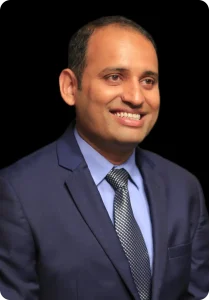
Rakesh Kankanala is the Managing Director, Metals and Mining of Essar Capital. An MBA from IIM Lucknow, Rakesh is a qualified Engineer from NIT, and brings with him 13 years of experience. Prior to being the Managing Director at Essar Capital, Rakesh has been at leadership positions in Essar Ports. Earlier on he has worked with TCS in the beginning of his career.
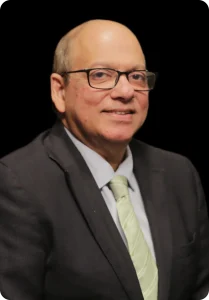
Rajiv Agarwal is the Managing Director & CEO at Essar Ports. He has over 30 years of experience and has held leadership positions in sectors such as Ports, Shipping, Telecom, Retail and Business Processing Outsourcing. He was appointed as MD & CEO of Essar Shipping, Ports & Logistics Limited in 2010.He Joined Essar in 1997 as COO in Essar Telecom and was the Executive Director of Essar Shipping Limited from 1998-2002. He has been a key member of several industry committees like Confederation of Indian Industries, Federation of Indian Commerce Industries, The Associated Chamber of Commerce & Industry of India and SUPERBRANDS for several years.
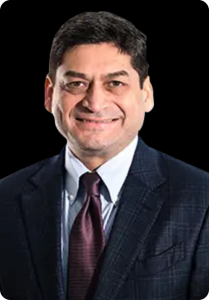
Prashant Ruia is a second-generation entrepreneur who belongs to the founding family of Essar Group. Having been inducted into the business at an early age Prashant at 55 is an industry veteran. He has been at the helm of decision making for the Essar Group for more than four decades.
Essar Group is one of India’s largest multinational conglomerates, operating across Energy, Infrastructure, Metals & Mining and Technology & Retail sectors. Essar with an asset base of $9.6 billion, and annual revenues of $15 billion is fast-aligning to the needs of a low-carbon economy and global Net Zero carbon goals by investing in technology and innovation in each of the four sectors where it is present.
Prashant is an active member of the UK India Business Council (UKIBC), Young Presidents Organization (YPO), Confederation of Indian Industries (CII), Entrepreneurs Organization (EO) and a board member in the US-India Strategic Partnership Forum (USISPF).

Shashi Ruia, a first-generation entrepreneur industrialist, has made invaluable contributions to the core industrial and infrastructure sectors in India and has steered Essar to a prominent position in the global industry.
Mr Ruia began his career in the family business in 1965 under the guidance of his father, the late Nand Kishore Ruia. Along with brother Ravi, Shashi Ruia laid the foundation of Essar and spearheaded its business strategy, diversification and growth. Today, Essar Global Fund Limited (EGFL), which owns the businesses the brothers co-founded, is a global investor, owning a number of world-class assets diversified across the core sectors of Energy, Metals & Mining, Infrastructure, Technology and Services. The Fund’s portfolio companies generate aggregate revenues of US $14 billion. These companies operate more than 50 assets spread across the globe, while adhering to international standards of health, safety, environmental protection and corporate governance.
Essar has time and again demonstrated its ability to build and operate world-class assets that have elicited the interest of the best global players. Essar’s portfolio businesses in the Telecom, BPO and Oil & Gas sectors have attracted more than US $40 billion of monetisation proceeds from global majors, like Vodafone, Rosneft, Trafigura and Brookfield.
Shashi Ruia’s vision saw Essar gain a first-mover advantage in many businesses. For example, when the Indian telecom sector was opened up for private participation, Essar was among the first companies to offer mobile telephony services.
Mr Ruia is on several important national bodies and industry associations. He was on the managing committee of the Federation of Indian Chambers of Commerce and Industry (FICCI), an apex body of India’s trade and business associations. He has also been the Chairman of the prestigious Indo-US Joint Business Council and is a former president of the Indian National Shipowners Association (lNSA). Mr Ruia is a member of the PM’s Indo-US CEO’s Forum and India – Japan Business Council
In 2007, Mr Ruia joined an elite list of achievers, which includes the likes of Richard Branson, Peter Gabriel, Ray Chambers, Pam Omidyar, Amy Robbins and Richard Tarlow, who independently fund The Elders. The Elders is a group of world renowned personalities, comprising Desmond Tutu, Graça Machel, Kofi Annan, Jimmy Carter, Li Zhaoxing, Mary Robinson and Muhammad Yunus, who have joined hands to tackle the world’s most difficult problems.
Mr Ruia was also the recipient of the Business India Businessman of the Year Award 2010.
Widely regarded as one of the architects of modem India, Shashi Ruia has a passion for education and mentoring young talent. He is proud of all the employees of Essar who have done well for themselves under his stewardship.

Ravi Ruia belongs to the generation of industrialists who have played a significant role in leading India’s industrial renaissance. An engineer by training, his entrepreneurial abilities have enabled the Essar Global portfolio of companies to become one of the leading names in global industry.
Ravi began his career in the family business and has worked with his elder brother, Shashi Ruia, toward steering the company to its current position of eminence, helping in the consolidation of its businesses and through setting up overseas ventures.
The two brothers, Shashi and Ravi, jointly founded Essar Global Fund Limited (EGFL) as a diversified global private fund exclusively managed by its investment manager, Essar Capital Limited. EGFL is a global investor, controlling a number of world-class assets diversified across the core sectors of Energy (comprising Exploration & Production, Refining & Marketing and Power businesses), Infrastructure (comprising Ports, Terminals and EPC businesses), Metals & Minerals, and Services & Technology (comprising Shipping, Oilfield services and Technology Solutions).
EGFL invests long-term capital into the portfolio companies and holds near 100% stake in all its investments. EGFL invests with a sense of active ownership, which involves direct engagement with the management of the respective businesses. The portfolio companies have aggregate revenues of about USD 13 billion and employ over 7,000 people.
Essar has time and again demonstrated its ability to build and operate world-class assets that have elicited the interest of the best global players. Essar’s portfolio businesses in the Telecom, BPO and Oil & Gas sectors have attracted more than $30 billion of monetization proceeds from global majors, like Vodafone, Rosneft and Trafigura.
Ravi has overseen Essar’s globalization plans, including new ventures in the United States, Africa, South East Asia and the Middle East, and has led several investments and divestments for Essar globally. Ravi was a recipient of the Business India Businessman of the Year Award 2010.
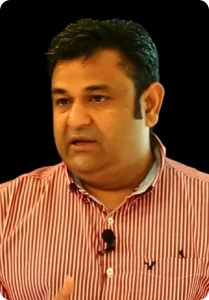
Alok Gupta is the Operating Partner, Technology & Retail, at Essar Capital. With over 32 years of work experience in the technological sector, Alok leads all new capital investment recommendations to the company’s board.He joined Essar as CEO Retail in the year 2010. Subsequently he took responsibility as President – Global Markets & Strategy since 2012 where he was responsible for sales, pricing strategy, marketing, and product & category management for the Steel business.Prior to joining Essar, he has worked with Café Coffee Day and UB Spirits.

Mr Naushad Ansari is Managing Director, Business Development, at Essar Capital. He would be responsible for advising and leading the company with regards all investments and opportunities in the metals & mining sector. He is an experienced professional and an industry veteran, with 33 years’ experience with Tata Steel and 11 years with Jindal Steel & Power. He is a strong business development professional with a Mechanical Engineering Degree from Aligarh Muslim University.

Madhu Vuppuluri is the Operating Partner, Metals & Mining, Essar Capital. With over 27 years of work experience in diverse industries ranging from Manufacturing (Metals, Mining & Power Generation) to Services sectors (Commercial Airline and Technology, inclusive of Business Process Outsourcing sectors), he provides strategic direction to the management of the Mesabi Portfolio. Madhu’s expertise lies in the area of mergers & acquisition, fund raising, investor relations, and operations management, and leads future capital investment recommendations to Essar Capital’s Board of Directors.

Jatinder Mehra is the Vice Chairman & Operating Partner of Essar Capital. With more than 50 years of experience, he guides Essar through transformations, manages operating functions and leads complex projects.Mr Mehra is involved in various Essar initiatives in areas of Business Strategy, Investments, Corporate Governance, Risk Management and Sustainability.Prior to joining Essar Capital, he lead several reputed public sector and private steel companies, including Steel Authority of India Limited and Rashtriya Ispat Nigam Limited as their Chairman and Managing Director.

Rahul Taneja is the Managing Director, Human Capital at Essar Capital. He is responsible for all HR matters for the Metals & Mining and Services & Technology portfolios.
Rahul is a seasoned professional with more than 28 years of experience specialising in areas of recasting HR and business processes, right sizing and cost optimisation. He also has rich experience in leading change management, cultural transformation, organisational redesign and restructuring. He has held key leadership positions at Jindal Steel & Power Ltd, Jet Airways, Essar and Dell international.

Andrew Wright is the Managing Director, Legal, at Essar Capital. He is responsible to advise and represent the company for all the legal matters concerning the Energy sector investments and portfolio businesses. Having completed his law degree from the University of Leeds, United Kingdom, Andrew has over 25 years of rich experience.
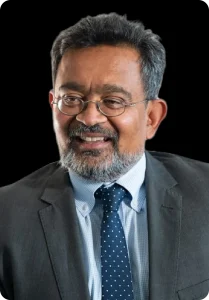
Mr Viral Gathani is the Managing Director, Finance, Energy, at Essar Capital. He is a seasoned professional with over 27 years of experience, including 23 years in international investment banking & private equity. He has led natural resources sector businesses for major investment banks globally. He has also advised boards and management on major transactions in 34 countries.Viral has held key leadership positions at Vedanta Resources Plc, CIMB Securities/ Royal Bank of Scotland, Warburg Pincus, Citigroup, and Credit Suisse.
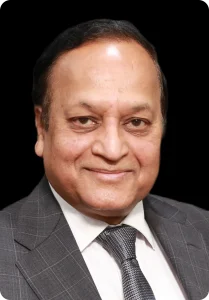
Sunil Jain is the Operating Partner for Energy transitions. He brings with him 39 years of experience, and has extensive experience in the renewable energy sector.Prior to Essar, he was the CEO & Executive Director of Hero Future Energies Pvt Ltd. He started his career with Escorts Limited where he worked and grew through various roles of operations and business development. Sunil is also the President of Wind Independent Power Producers Association.In 2012, he was awarded an excellence award for his contribution to renewable energy and sustainability by the Energy and Environment Foundation. His academic research paper on “Sustainability and Renewable Consumption Obligation” has been presented at forums of international repute.
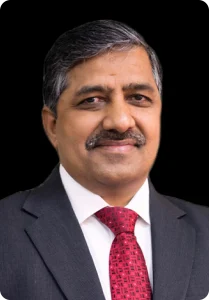
B.C. Tripathi is the Vice Chairman, Exploration & Production at Essar Capital, and has over 36 years of experience across Operation & Maintenance of Pipelines, Project Management, Contracts Management, Customer Relationship Management, Marketing etc. He is the former Chairman and Managing Director of state-run natural gas giant GAIL India Ltd and had started his career in Oil and Natural Gas Corporation.
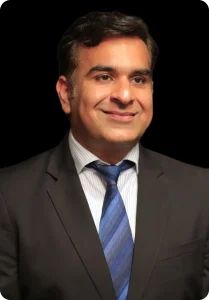
Kailash Daultani currently serves as the Managing Director, Treasury and Finance, at Essar Capital. With 18 years of experience, he has also served as the Senior Vice President, International Projects and Corporate Finance, with Essar Services. A qualified chartered accountant, Kailash joined Essar in 2003 after working with Chaturvedi & Shah and Dewani & Co.

Adithya Bhat, with over 27 years of experience in Governance, Risk and Compliance (GRC), is the Chief Risk Officer at Essar Capital. He is responsible for investigation, analysis and assessment of risk, and accordingly design and implement strategies and processes which mitigate these threats. He also ensures the successful delivery of the organisation’s corporate and business plans and desired outcomes.
Prior to this, he was a partner with KPMG’s risk consulting practice focusing on enterprise and compliance risk management, partnering with leading multinational companies in areas of GRC in India, North America and Middle East.
He has also led digitalisation initiative in GRC space and was instrumental in running technology-based solution around enterprise risk, compliance risk, license management and document repository systems. In addition, in an honorary capacity, Adithya is currently the Senior Vice President at the India Chapter of Institute of Internal Auditors Inc, USA and President elect for 2021 – 22.

Priya Chakravarty is the Senior Director, HR, at Essar Capital. She has more than 23 years of experience in Human Resources, having worked across industries like Manufacturing, Pharma, IT and Retail. In her last assignment as Chief People Officer – Hometown & Ezone, Priya was responsible for driving a transformational HR agenda that focused on organisational culture, building a talent pipeline, and initiating & aligning all people practices to business achievement. She has earlier worked with Cipla as Head HR – International Business and has also volunteered with the Akanksha Foundation. In her earlier stint with Essar, Priya has worked at Senior Management roles, initially with Essar Oil and then as Head – International HR (Corporate HR).

Dhanpat Nahata is the General Partner, Strategy and Risk, at Essar Capital. With over 20 years of experience in the field of M&A and transactions, he leads all the M&A structuring on complex transactions globally for Essar Capital. He is a part of the Management Committee of Essar Capital. Prior to joining Essar, he was associated with EY as a Partner for 11 years.
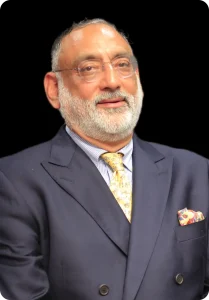
Haseeb Drabu is an economist with over 30 years of experience with diverse skill-sets and wide-ranging experience as a lawmaker, policy planner, banker and an economic commentator.
He has worked as an Economic Advisor, and the principal economic policy maker at the state level for seven years. He was chairman and chief executive of J&K Bank for five years. In his avatar as editor of a business daily, he also made his mark as a widely respected and incisive columnist on macroeconomics, fiscal and monetary policy.
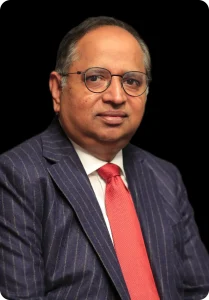
Srinivasan Vaidyanathan is the Operating Partner, Technology & Retail, at Essar Capital. With over 30 years of experience in operational leadership, investment management and business growth across diverse sectors, Srinivasan provides a critical evaluation of current and future capital investments. His strength lies in leading new business development opportunities and conducting preliminary due diligence and analysis of emergent companies and partners. Prior to Essar, he has worked with Archean Group as Group President, and with SIVA group as CEO for about 15 years.

No content available

Anshuman Ruia is part of the second generation of the Ruia family that founded Essar. Essar was founded in 1969 by his father, Shashi Ruia, and uncle Ravi Ruia.
Mr Anshuman Ruia is known for his financial expertise and project execution skills. He has overseen Essar’s BPO and Power businesses, and was instrumental in creating Aegis, the BPO arm of Essar. The Aegis business was monetised at a value almost 20 times the investments made. He is also responsible for the expansion and diversification of the Power business into new, renewable energy sources and its entry into the transmission and distribution segment.
Mr Ruia is a member of the YPO (Young Presidents Organisation), a connoisseur of music and a keen table tennis player.

With a mission to promote awareness about menstrual hygiene, the Sahej mobile app was launched to provide knowledge & access to affordable menstrual products to women from all social classes. Click here to download the app.
Over 4,00,000 sanitary napkins distributed to women in Mumbai slums & Mumbai police.

3Ply masks, N95 masks, Personal Protective Equipment (PPE), protective gloves, hand sanitisers and hand soaps supplied to hospitals, police stations, CISF and village communities
Installed a Walk-in Sample Kiosk (WISK) Chennai hospital

Meals/ dry ration/ vegetable kits provided to slum dwellers, migrant labourers, marginalised families, ragpickers, orphanages, transgenders and families in remote villages/ Adivasi tribes.
Ready to Eat (RTE) meals served to frontline warriors, i.e. doctors, police, etc

Smiti is a self-driven business leader and a true entrepreneur at heart. With over 15 years of experience in diverse fields including media & publishing, corporate communications, and mergers & acquisitions, Smiti Kanodia has been a guiding force behind the evolution of corporate brand communications and human resource management at Essar.
In her current capacity at Essar, she is actively involved with the Group’s Corporate Social Responsibility initiatives through Essar Foundation. Her keen interest in sustainable business practices and corporate citizenship has manifested in connecting with CSR evangelists and bringing global best practices to the organizations she supports.
In the past, at just 24 years, Smiti founded a publishing company, Paprika Media, which published the internationally acclaimed entertainment and lifestyle magazine, Time Out. The magazine, which had a readership of 6 lakhs, published editions from three cities in India—Mumbai, Delhi and Bangalore—and created well-known media properties, like the Time Out Food Awards.
Smiti’s ability to provide a unique perspective on brand strategy through the combination of creative thinking comes from her education in both finance and publishing. She received her bachelor’s degree in Finance & Marketing from New York University’s Stern School of Business and a postgraduate degree in Publishing from the London College of Printing. Early in her professional career, she worked as a Mergers & Acquisitions analyst in the telecommunications sector at Lehman Brothers in New York.
A member of the founding family of Essar, Smiti is the daughter of Madhu and Ravi Ruia, who is co-founder of Essar. She is married to Nishant Kanodia, Vice Chairman of the Matix Group, Smiti and Nishant have two children.
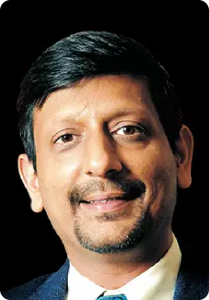
Vikash Saraf is the non-executive director of Essar Capital. He has over 25 years of work experience in the field of M&A and Transactions.
He joined Essar in early 2000 and has played a key role on strategic investments of Essar in core economy and infrastructure sectors. Vikash is also a member of the Management Committee of Essar Capital.
Prior to joining Essar Capital, Vikash was an Executive Director and CEO of SSKI Corporate Finance Ltd, a boutique investment bank specialising in infrastructure financing and advisory.

- ₹ 10 Lakh,1" data-value="Loan ₹ 10 Lakh">Loan ₹ 10 Lakh
- Games & Puzzles

- Entertainment
- Latest News
- Kolkata doctor rape case LIVE
- Shikhar Dhawan Retirement
- NEET PG 2024 Result Live
- Web Stories
- Mumbai News
- Bengaluru News
- Daily Digest

Willing to drop Rewant Ruia as consortium partner to win Essar steel: NuMetal’s top investor
Rewant ruia is a good addition to our bid, but if that stands between us and winning essar steel, other shareholders will buy his stake, says makram abboud, vc of vtb capital.
NuMetal Ltd, which has bid for bankrupt Essar Steel Ltd, is willing to drop Rewant Ruia as a consortium partner if the situation so demands, a top official of the company said in an interview.
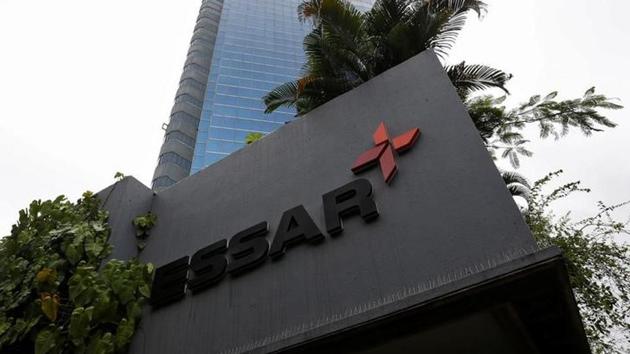
Rewant Ruia is the son of Ravi Ruia, vice-chairman of Essar Group.
The Insolvency and Bankruptcy Code (IBC) has barred owners and associates of defaulter companies from bidding for distressed assets when they are sold to raise cash for creditors.
“Though we believe that Rewant is a good addition to our bid; but if that stands between us and winning Essar Steel, other shareholders will buy his stake, and this is already stipulated in our bid that was submitted” said Makram Abboud, vice-chairman of VTB Capital, the largest shareholder in NuMetal.
The consortium also includes Russian engineering firm Tyazhpromexport (TPE), Indo International Trading and Aurora Enterprises Ltd, owned by a trust controlled by Rewant Ruia as its trustee.
“The Ruias are one of our clients and we have a very good relationship with them but we are not married to them and they are not married to us, we all work independently as much as we work together” Abboud said.
“Also, Rewant Ruia does not have a board representation in NuMetal and is only a minority shareholder with no say in the management and was inducted because we wanted a local partner,” he added.
Mint had reported 21 February that NuMetal’s bid for Essar Steel was likely headed for disqualification as the technical evaluation by law firm Cyril Amarchand Mangaldas and advisory firm Grant Thornton, were found to be short of fulfilling the prescribed eligibility criteria under the Insolvency and Bankruptcy Code, which bars promoters of defaulting companies from bidding for distressed assets.
Mint had reported on 12 February that NuMetal and ArcelorMittal were the only firms to have submitted binding financial bids for bankrupt Essar Steel Ltd.
“Our interest in Essar Steel has been long standing and we have been engaged in discussions with all stakeholders before it was referred to NCLT but nothing stuck at that stage” Abboud said.
“It was a different cycle back then but the steel sector is very different now and we were interested in bidding because the market has changed and our appetite has changed too,” Abboud maintained.
Not ruling out the possibility of seeking legal recourse in the event of being disqualified, Abboud said “our bid is within the framework of law we would respond accordingly if our eligibility is questioned”.
There were questions around the validity of ArcelorMittal’s bid as well, which had sold its stake in distressed steel maker Uttam Galva Steels Ltd back to its promoters at a huge discount, possibly as a means to qualify as a bidder for Essar Steel and other distressed assets that are up for sale. Uttam Galva is in the Reserve Bank of India’s second list of corporate defaulters slated to face insolvency proceedings.
Essar Steel owes around Rs45,000 crore to a consortium of 22 creditors led by State Bank of India (SBI), Essar Steel Hazira is the country’s largest single-location flat steel plant. The complex also houses a 30 million tonne per annum, all-weather, deep draft, dry bulk port and a 515 megawatt natural gas-operated power plant.
In August last year the creditors filed bankruptcy proceedings against Essar Steel in NCLT following which an interim resolution professional was appointed to administer the company. Several other potential suitors which include Vedanta Resources and Tata Steel had shown initial interest in the company and had submitted an expression of interest but did not submit binding bids eventually.
While the Committee of Creditors led by SBI is yet to make its decision public the Financial Express citing people aware of the matter reported on February 24 that the creditors are likely to approach the NCLT for approval before the resolution plans submitted by NuMetal and ArcelorMittal are taken up for evaluation.
- Terms of use
- Privacy policy
- Weather Today
- HT Newsletters
- Subscription
- Print Ad Rates
- Code of Ethics
- India vs Sri Lanka
- Live Cricket Score
- Cricket Teams
- Cricket Players
- ICC Rankings
- Cricket Schedule
- Shreyas Iyer
- Harshit Rana
- Kusal Mendis
- Ravi Bishnoi
- Rinku Singh
- Riyan Parag
- Washington Sundar
- Avishka Fernando
- Charith Asalanka
- Dasun Shanaka
- Khaleel Ahmed
- Pathum Nissanka
- Other Cities
- Income Tax Calculator
- Petrol Prices
- Diesel Prices
- Silver Rate
- Relationships
- Art and Culture
- Taylor Swift: A Primer
- Telugu Cinema
- Tamil Cinema
- Board Exams
- Exam Results
- Admission News
- Employment News
- Competitive Exams
- BBA Colleges
- Engineering Colleges
- Medical Colleges
- BCA Colleges
- Medical Exams
- Engineering Exams
- Love Horoscope
- Annual Horoscope
- Festival Calendar
- Compatibility Calculator
- Career Horoscope
- Manifestation
- The Economist Articles
- Lok Sabha States
- Lok Sabha Parties
- Lok Sabha Candidates
- Explainer Video
- On The Record
- Vikram Chandra Daily Wrap
- Entertainment Photos
- Lifestyle Photos
- News Photos
- Olympics 2024
- Olympics Medal Tally
- Other Sports
- EPL 2023-24
- ISL 2023-24
- Asian Games 2023
- Public Health
- Economic Policy
- International Affairs
- Climate Change
- Gender Equality
- future tech
- HT Friday Finance
- Explore Hindustan Times
- Privacy Policy
- Terms of Use
- Subscription - Terms of Use
Neu-Samara Mennonite Settlement (Samara Oblast, Russia)
Neu-Samara ( Pleshanov ) was a Mennonite settlement in the northern part of the fertile section of Samara , Russia , about 125 miles (210 km) east of the city by the same name. It was founded in 1890 as a daughter settlement of Molotschna and embraced 59,400 acres of land. In 1926 it numbered 3,071 Mennonite and 66 non-Mennonite inhabitants, who lived in twelve villages and five single farms.
See also Pleshanov .
Bibliography
Hege, Christian and Christian Neff. Mennonitisches Lexikon, 4 vols. Frankfurt & Weierhof: Hege; Karlsruhe: Schneider, 1913-1967: v. III, 219.
| Date Published | 1957 |
|---|---|
Cite This Article
, . "Neu-Samara Mennonite Settlement (Samara Oblast, Russia)." Global Anabaptist Mennonite Encyclopedia Online . 1957. Web. 24 Aug 2024. https://gameo.org/index.php?title=Neu-Samara_Mennonite_Settlement_(Samara_Oblast,_Russia)&oldid=135008 .
, . (1957). Neu-Samara Mennonite Settlement (Samara Oblast, Russia). Global Anabaptist Mennonite Encyclopedia Online . Retrieved 24 August 2024, from https://gameo.org/index.php?title=Neu-Samara_Mennonite_Settlement_(Samara_Oblast,_Russia)&oldid=135008 .

Adapted by permission of Herald Press , Harrisonburg, Virginia, from Mennonite Encyclopedia , Vol. 3, p. 856; vol. 4, p. 1147. All rights reserved.
©1996-2024 by the Global Anabaptist Mennonite Encyclopedia Online. All rights reserved.
- Mennonite Settlements in Russia
Navigation menu
The Economic Times daily newspaper is available online now.
Numetal ready to buy out rewant ruia; claims their bid for essar steel fully legit.
Numetal and ArcelorMittal are the only two bidders for the 10-million tonne Essar Steel assets at Hazira, which owe the banks more than Rs 45,000 crore.

Read More News on
(Catch all the Business News , Breaking News , Budget 2024 Events and Latest News Updates on The Economic Times .)
Subscribe to The Economic Times Prime and read the ET ePaper online.

Shein is back in India. Will this dim away Zara, H&M and Urbanic’s lustre?
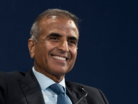
Right call or wrong? Factors that will decide investor return from Bharti’s BT deal

Four critical reasons why India is rethinking its approach to China

Neeraj Chopra, Manu Bhaker and Vinesh Phogat reach a new high in brand sponsorships. Will it sustain?

As economic growth worries MPC members, should RBI err on the side of inflation?

Meals to movies: Zomato spices up menu with acquisition of Paytm’s ticketing biz
Find this comment offensive?
Choose your reason below and click on the Report button. This will alert our moderators to take action
Reason for reporting:
Your Reason has been Reported to the admin.

To post this comment you must
Log In/Connect with:
Fill in your details:
Will be displayed
Will not be displayed
Share this Comment:
Stories you might be interested in

IMAGES
COMMENTS
Ravi Ruia is the co-founder and vice-chairman of the Essar Group, a prominent Indian multinational corporation. Born on April 22, 1949, Ruia is married to Madhu Ruia, and together they have two children, Smiti and Rewant. He pursued his education at the College of Engineering, Guindy, a public engineering college in Chennai, India.
The Sunrays yacht can accommodate up to 16 guests and has a crew of 28. Her interior design is by Terence Disdale Design.. Terence Disdale Design. Terence Disdale Design is a luxury design and architecture firm based in London, UK, that specializes in high-end residential, commercial, and hospitality projects. The firm was founded by Terence Disdale in 1973 and has since established a ...
Rewant is a member of the Ruia Family which is the founding family of Essar. His global exposure, fresh perspectives and arc of activities has contributed to Essar's strategy and operations in the mining, steel and retail sectors both in India and abroad. He completed his MBA from Stanford Graduate School of Business in 2013.
View Rewant Ruia's profile on LinkedIn, a professional community of 1 billion members. Essar Group · As a member of the founding family of Essar, Rewant has developed considerable knowledge and experience in the oil & gas, refining, metals & mining, and infrastructure sectors. <br><br>His global exposure, fresh perspectives and arc of ...
About Shashi & Ravi Ruia. Mumbai brothers Shashi (pictured) and Ravi Ruia's Essar group has interests in shipping, oil refining, infrastructure, and metals and mining. The sale of their Essar ...
Aurora is controlled by a trust owned by Rewant Ruia, son of Ravi Ruia. Initially, Numetal's bid for Essar Steel was dismissed as ineligible, but a tribunal overturned the decision. However, the VTB-Essar joint-venture is facing severe challenge: both VTB and Andrey Kostin have been blacklisted by the US Government. ...
Shashi Ruia and Ravi Ruia, commonly referred to as the Ruia Brothers, are Indian billionaires, and the owners of Essar Group, founded in 1969. In 2012, Forbes named the Ruia brothers as the world's richest Indians with a net worth of US$7 billion. [1] Ravi Ruia.
Rewant Ruia, 30, is the son of Ravi Ruia, who founded the $27 billion Essar Group along with brother Shashi Ruia. Together, his father and uncle are No. 8 on Forbes 2012 list of the 100 richest ...
Numetal, incorporated in October last year to bid for Essar Steel that was undergoing insolvency, has metamorphosed way to fast in the last six months to suit the bidding eligibility criteria. At the time of incorporation, Rewant Ruia, son of Essar Steel promoter Ravi Ruia, held 100 per cent of Numetal. He divested five times in a span of six ...
Numetal was incorporated on October 13, 2017. At the time of incorporation Aurora Enterprises Ltd, then wholly-owned by Aurora Holdings Ltd, a company 100% owned by Rewant Ruia, held 100% holding in Numetal. Since then and ever since section 29A was included in the IBC, Aurora Enterprises Ltd has shed its stake in Numetal.
Ravi Ruia is an Indian billionaire and co-founder of the Essar Group. His net worth is $2 billion. He is owner of the yacht Sunrays. ... Smiti Ruia, Rewant Ruia: निवास स्थान: London, UK: Private Jet: Boeing 737 BBJ (N301SR)
Essar Steel operates a 10-million tonne plant in Gujarat and owes more than Rs 45,000 crore to lenders.
Rewant Ruia's father Ravi Ruia is the promoter of ESIL whose account was classified as an NPA. Before submitting the EOI, on October 18, 2017, AEL transferred its shareholding of 26.1% in Numetal to a group company, viz., Essar Communications Limited. This group company was ultimately owned by 'Virgo Trust' and 'Triton Trust', the ...
Mumbai: Essar co-founder Ravi Ruia's son is all set to bid $6 billion in cash to retain the family steel business.It has been learnt that a consortium, led the youngest Essar scion Rewant Ruia, is set to make an all-cash offer of $5-6 billion (approximately Rs 33,000 crore to Rs 40,000 crore) in order to retain Essar Steel.
Mumbai: Youngest Essar scion Rewant Ruia-led consortium — Nu Metal Corporation — is likely to make an all-cash offer of $5-6 billion (about Rs 33,000-40,000 crore) to retain the family's ...
0 Followers, 1,008 Following, 22 Posts - See Instagram photos and videos from Rewant Ruia (@rewantr)
Rewant is a member of the Ruia Family which is the founding family of Essar. His global exposure, fresh perspectives and arc of activities has contributed to Essar's strategy and operations in the mining, steel and retail sectors both in India and abroad. He completed his MBA from Stanford Graduate School of Business in 2013.
An Essar Group official told PTI that Rewant Ruia had resigned from the board of Essar Steel way back in 2012, and thus in no way is related to Essar Steel promoters. It can be noted that both ...
Rewant Ruia is a good addition to our bid, but if that stands between us and winning Essar Steel, other shareholders will buy his stake, says Makram Abboud, VC of VTB Capital
Ravi Ruia is an Indian billionaire and co-founder of the Essar Group. His net worth is $2 billion. He is owner of the yacht Sunrays
Neu-Samara was a Mennonite settlement in the northern part of the fertile section of Samara, Russia, about 125 miles (210 km) east of the city by the same name.It was founded in 1890 as a daughter settlement of Molotschna and embraced 59,400 acres of land. In 1926 it numbered 3,071 Mennonite and 66 non-Mennonite inhabitants, who lived in twelve villages and five single farms.
MUMBAI: Numetal, the SPV floated by private equity arm of Russian lender VTB Bank and Rewant Ruia, a Ruia family member, has claimed that its bid for Essar Steel has "solid legal backing" and if need be, "the other shareholders will buy out Rewant's" 25 per cent stake in the company. The shareholders of the Mauritius-based Numetal, a special purpose vehicle that focuses on steel and infra ...